
Little Workbox is a monthly STEM subscription for kids ages 8-15. Each month, you will receive up to four projects connected to a STEM theme, physics, chemistry, engineering, robotics, and more! The kits come with all necessary materials, tools, and instructions to complete the projects. Now, you can take away the kids from digital devices, and instead, engage them in the real world with real projects that they can share with their friends, siblings, or the whole family!
A month-to-month subscription is $19.95. Also available is a 3-month prepaid subscription for $56.85, a 6-month prepaid subscription for $107.70, and a 12-month prepaid subscription for $203.40 (which gives the best value, bringing down the monthly price to $16.95). You can also grab a one-time box for $22.95 that features Little Workbox’s popular past projects.
This is the review of the Spinning Blades Box, one of Little Workbox’s popular past projects.
DEAL: Get 25% off your first box! Use coupon code HELLO25.

A sticker outside the box indicates the theme. This month, it’s all about SPINNING BLADES!
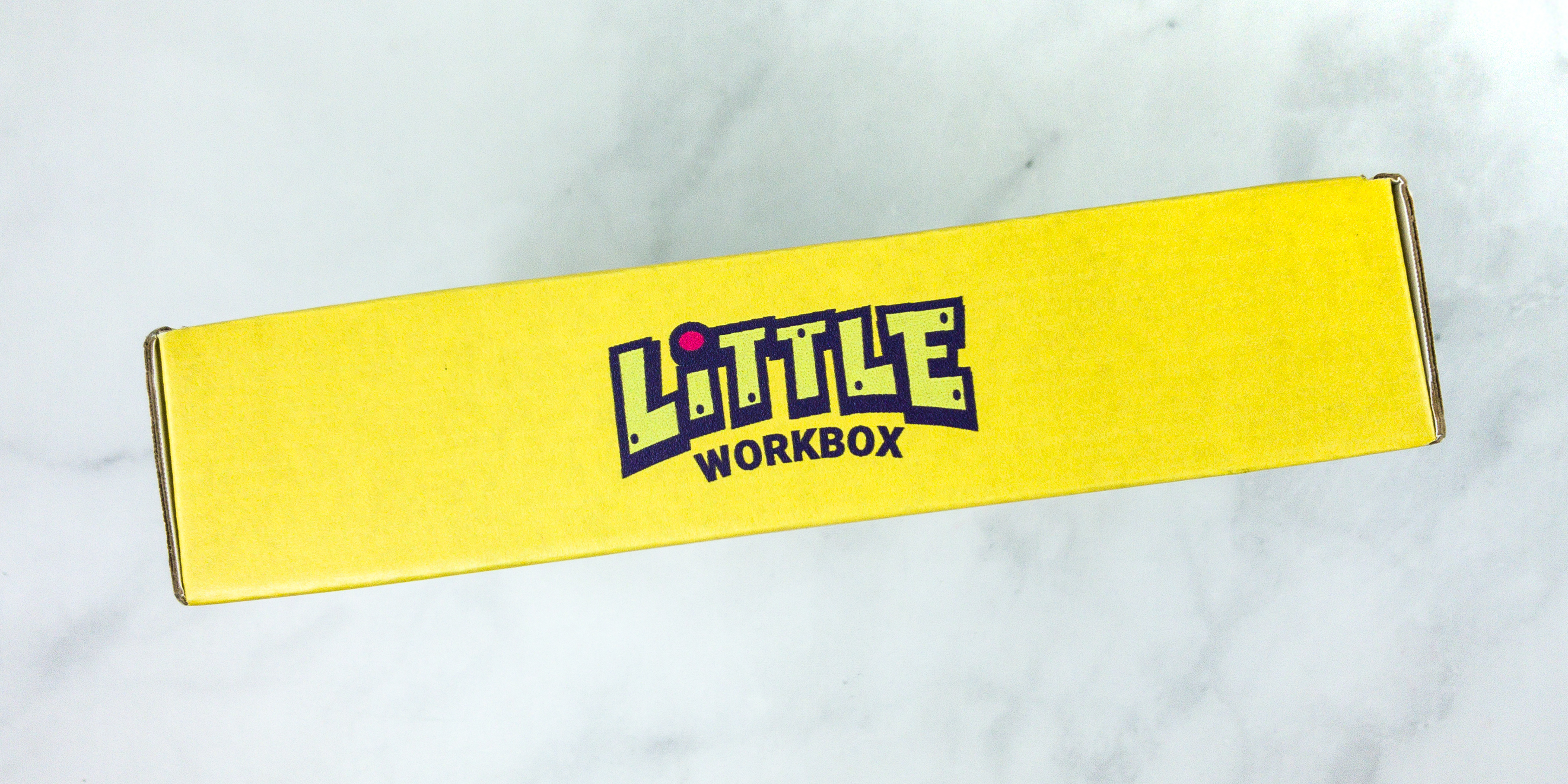
We’re excited about this month’s projects!
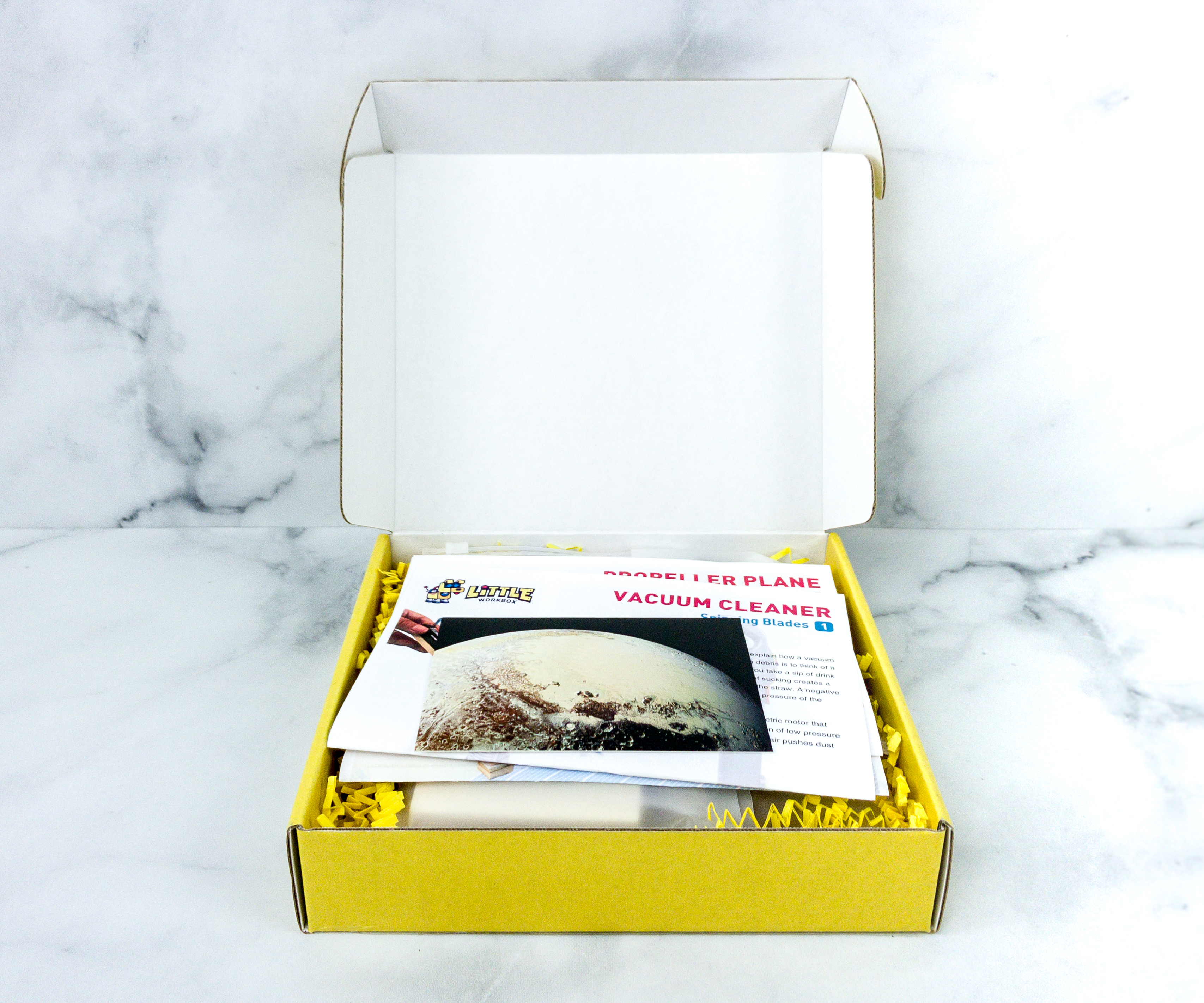
The box is full to the brim!

Everything inside the box is protected bright yellow squiggles!

There’s an included postcard that features the Sputnik Planum.
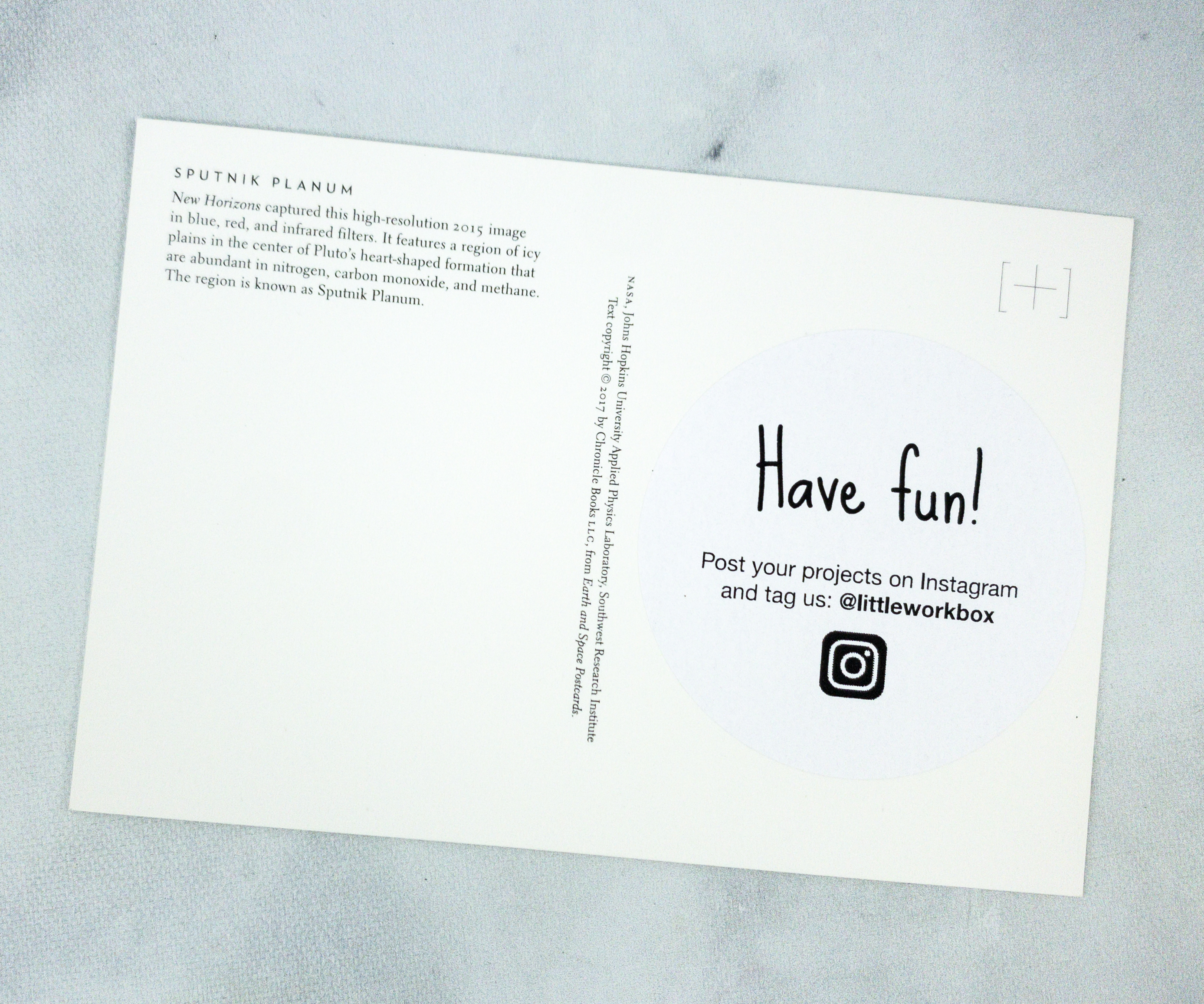
The back has ample space for notes, as well as trivia about Sputnik Planum.
SPUTNIK PLANUM
New Horizon captured this high-resolution 2015 image in blue, red, and infrared filters. It features a region of icy plains in the center of Pluto’s heart-shaped formation that are abundant in nitrogen, carbon monoxide, and methane. The region is known as Sputnik Planum.
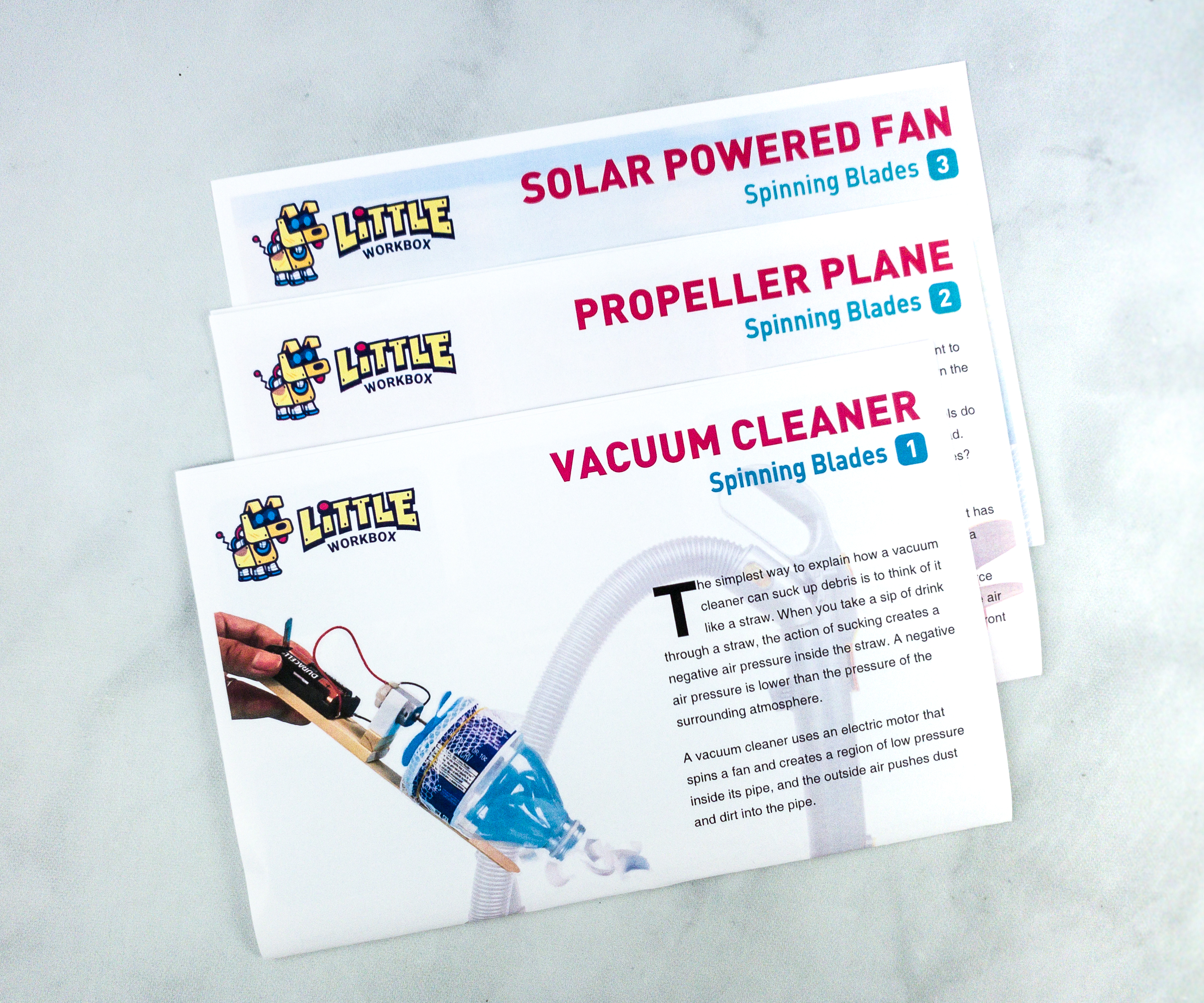
Each activity or project comes with its own information sheet.
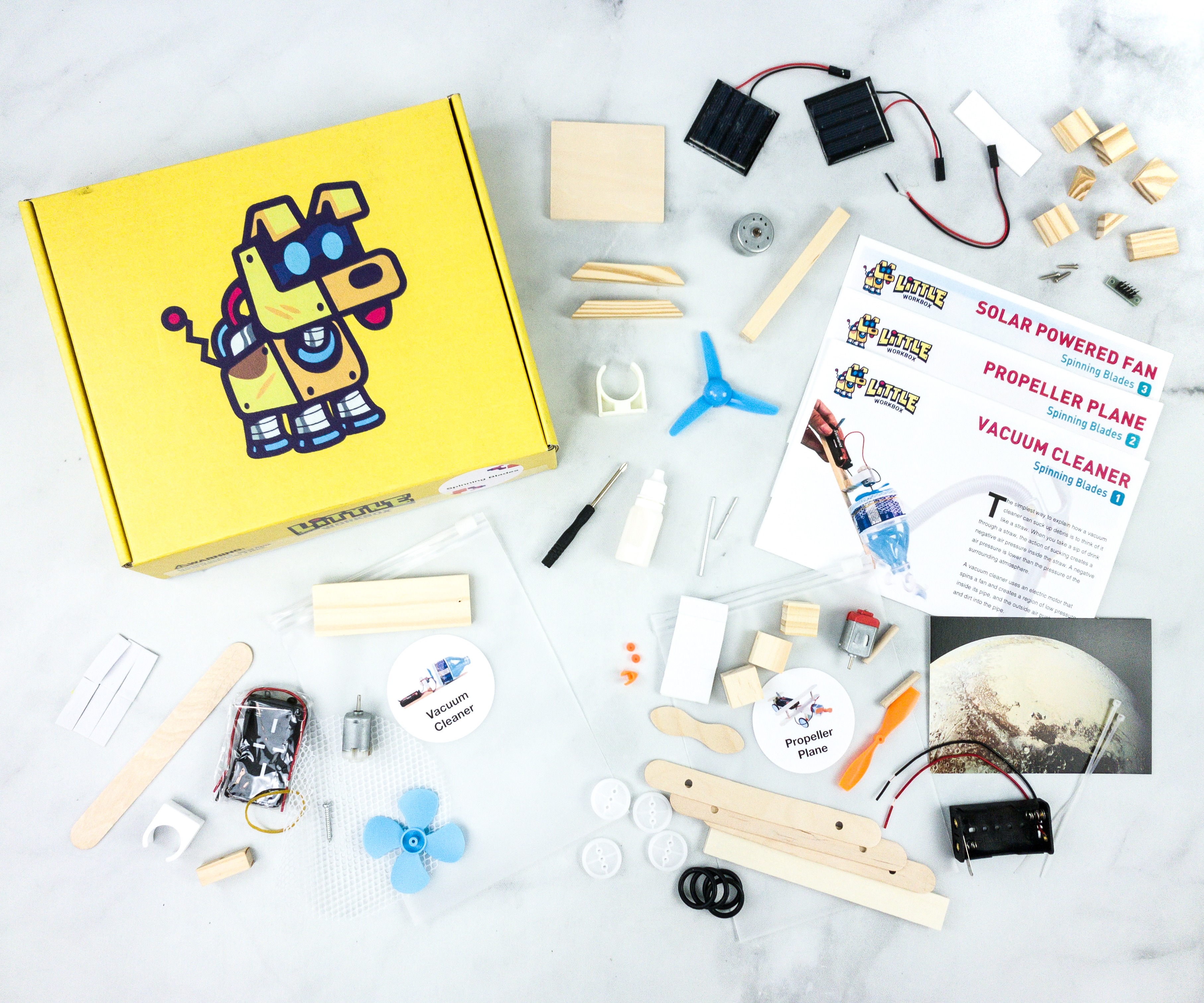
Everything in my box!

The materials for each activity are packed in reusable zip-lock pouches.
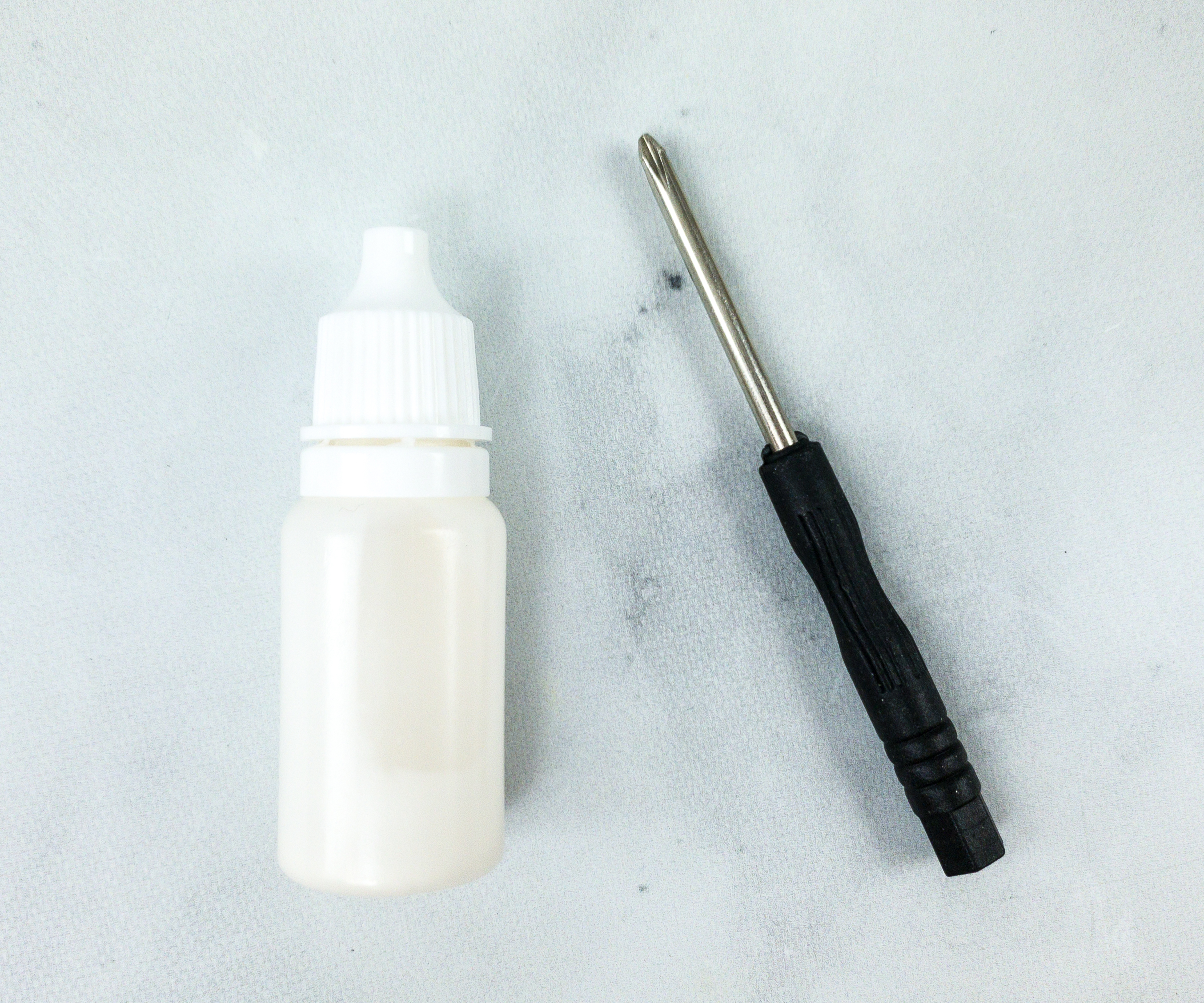
The box also includes a screwdriver and a small bottle of wood glue.
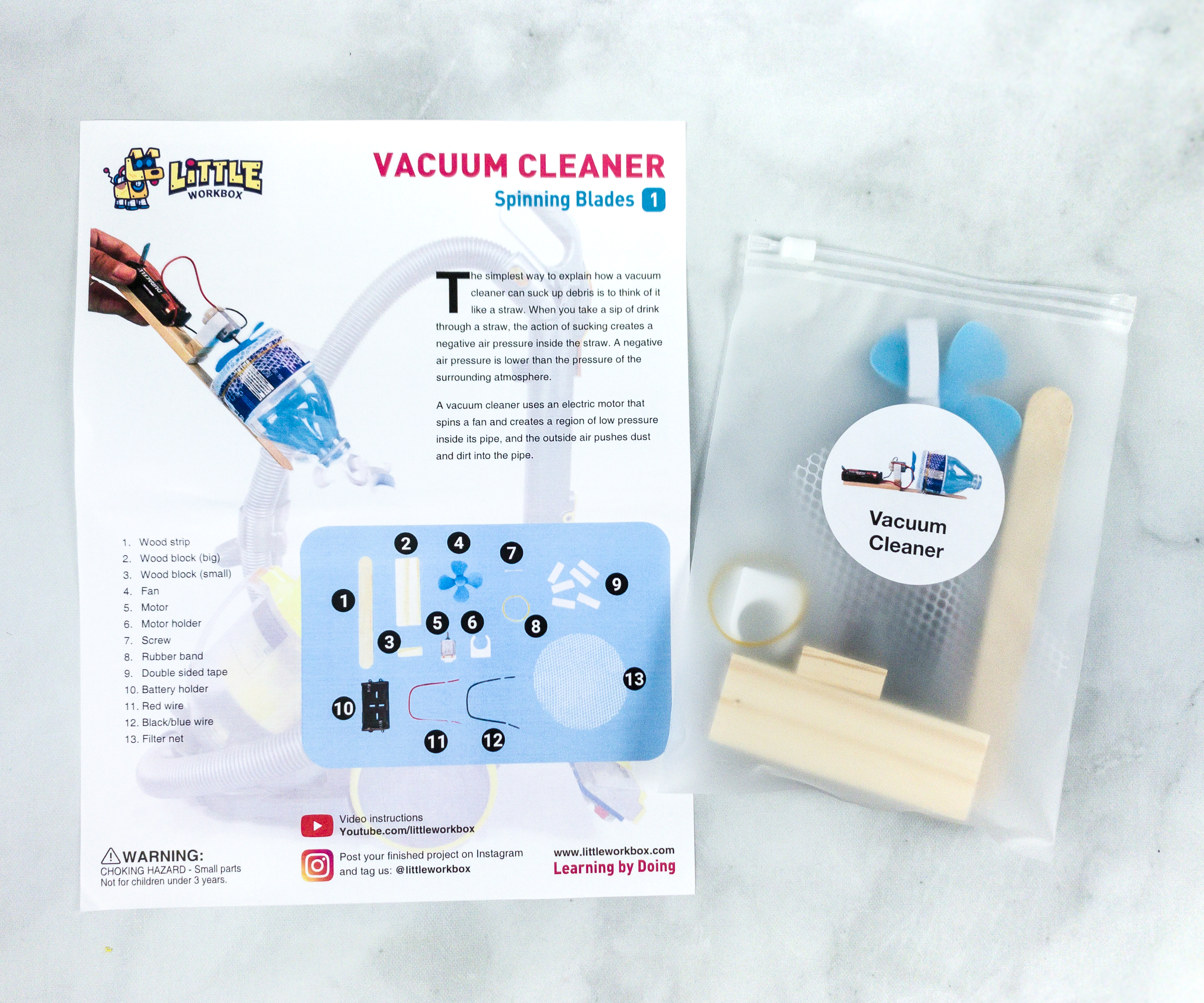
Spinning Blades 1: Vacuum Cleaner.
A vacuum cleaner uses an electric motor that spins a fan and creates a region of low pressure inside its pipe, and the outside air pushes dust and dirt into the pipe.
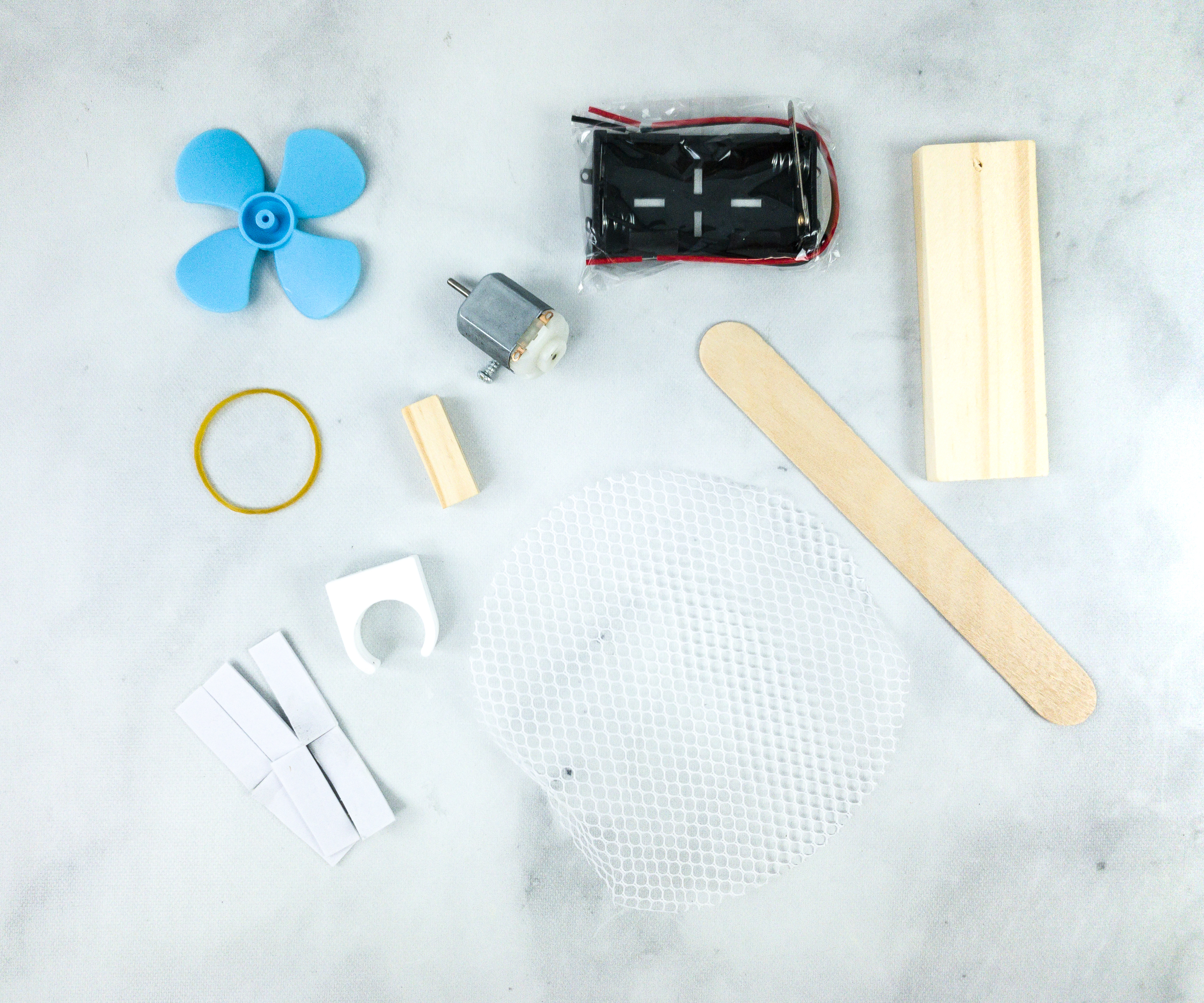
The pack contains the following materials: wood strip, wood block (big), wood block (small), fan, motor, motor holder, screw, rubber band, double-sided tape, battery holder, red wire, black/blue wire, and a filter net.

The flip side of the information sheet includes the complete instructions on how to assemble the project.
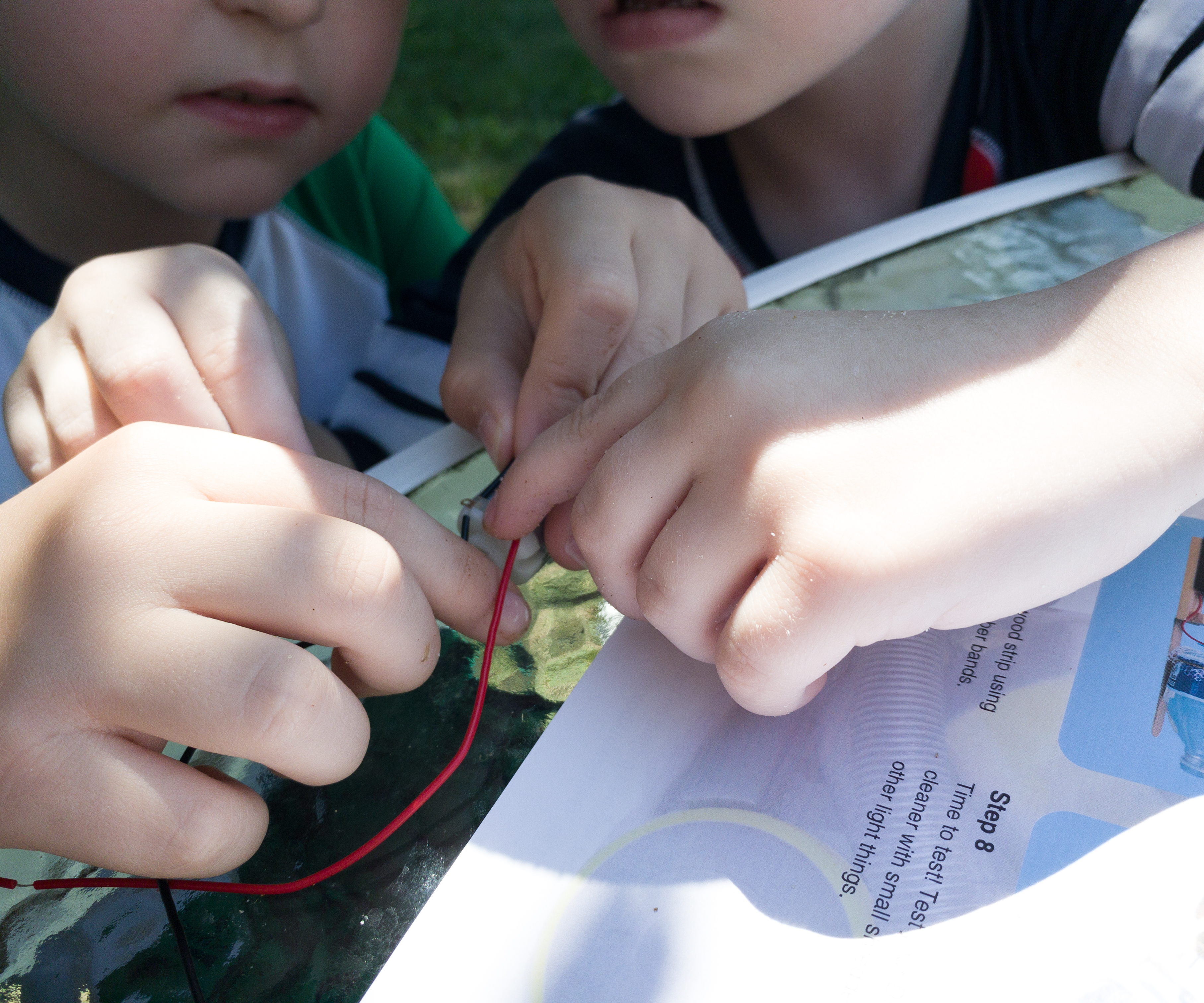
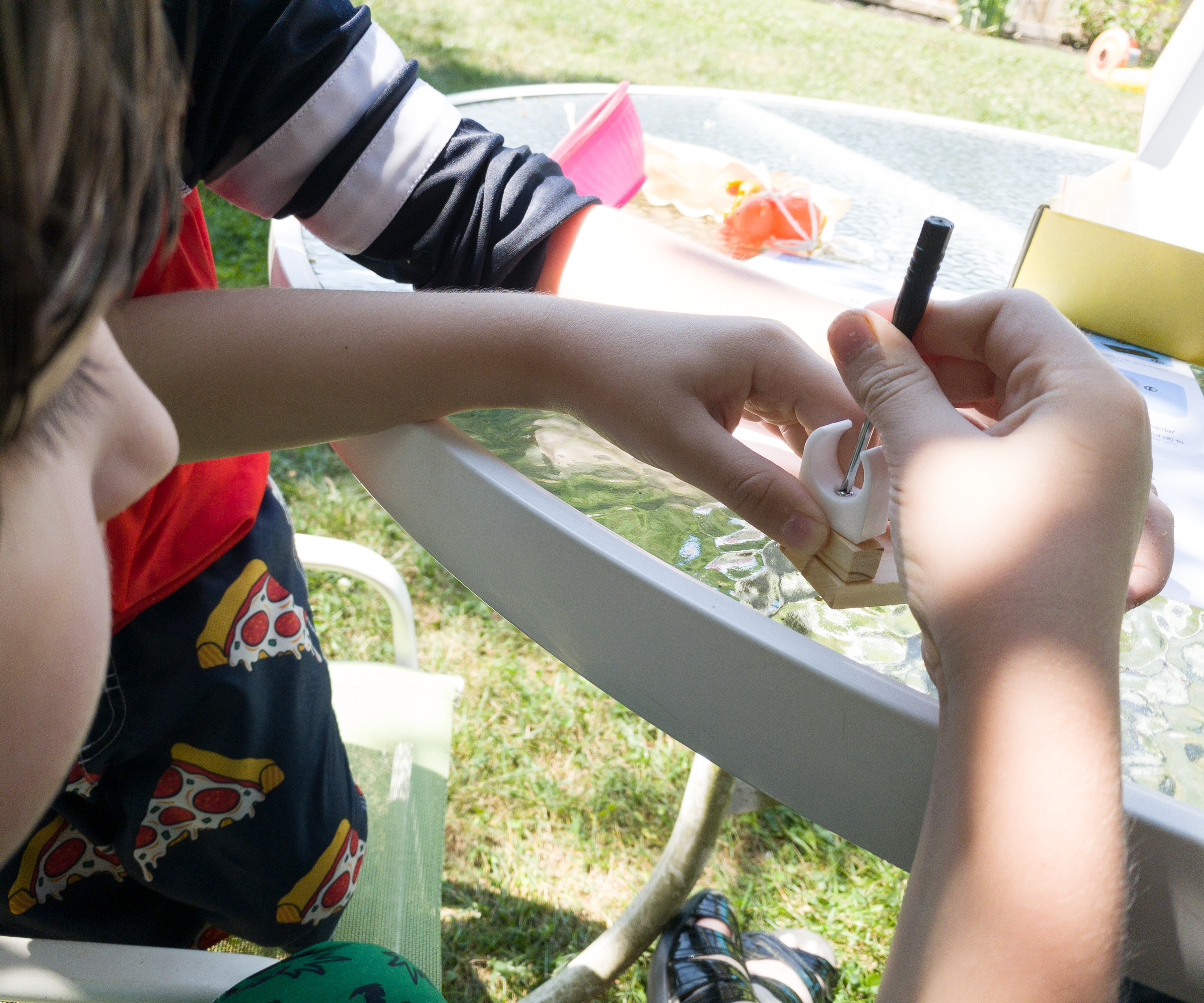
My kids used the screwdriver to affix the two wood blocks and the motor holder to make the vacuum cleaner holder.
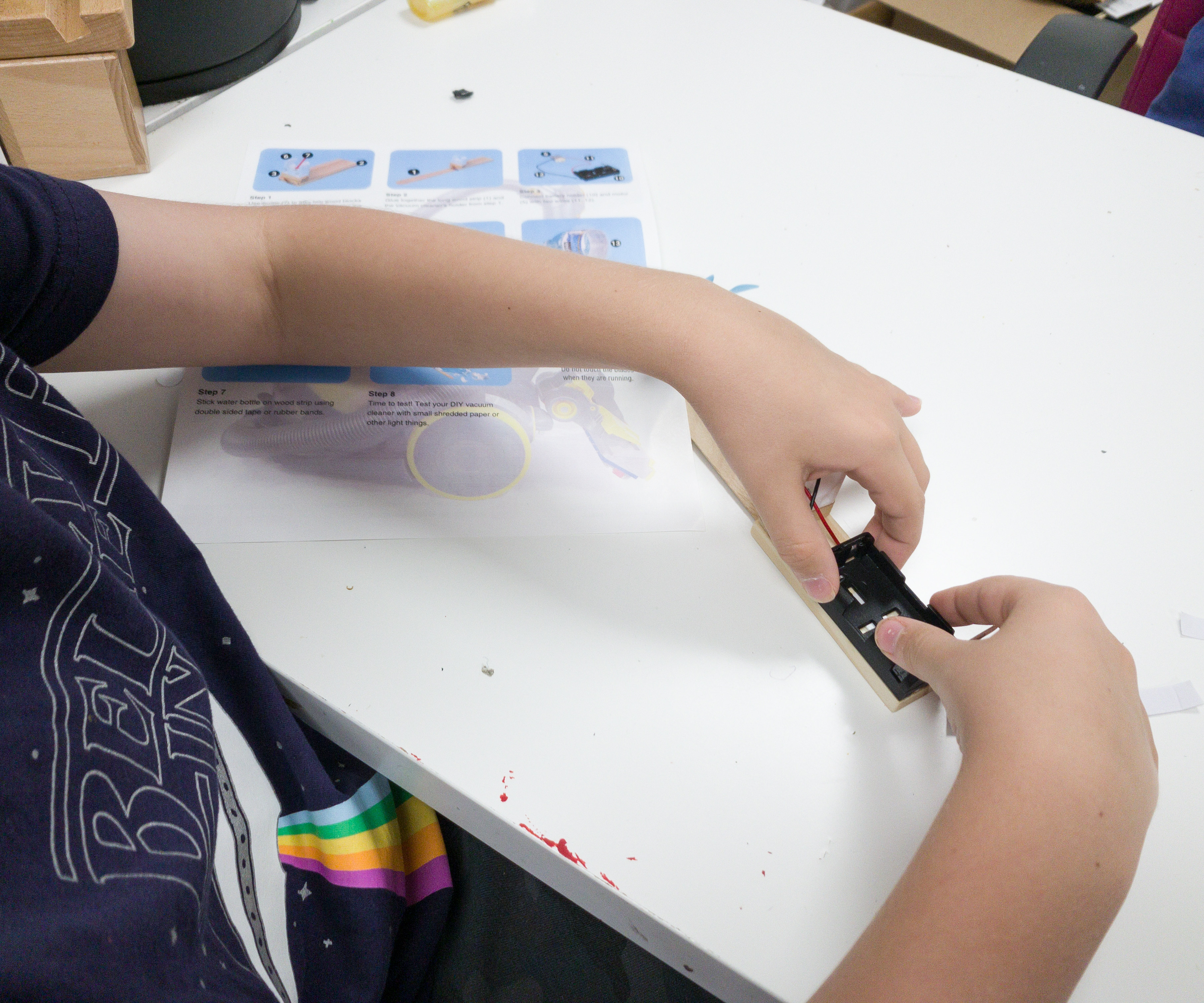
My son also assembled the wood block with the motor and battery holder.
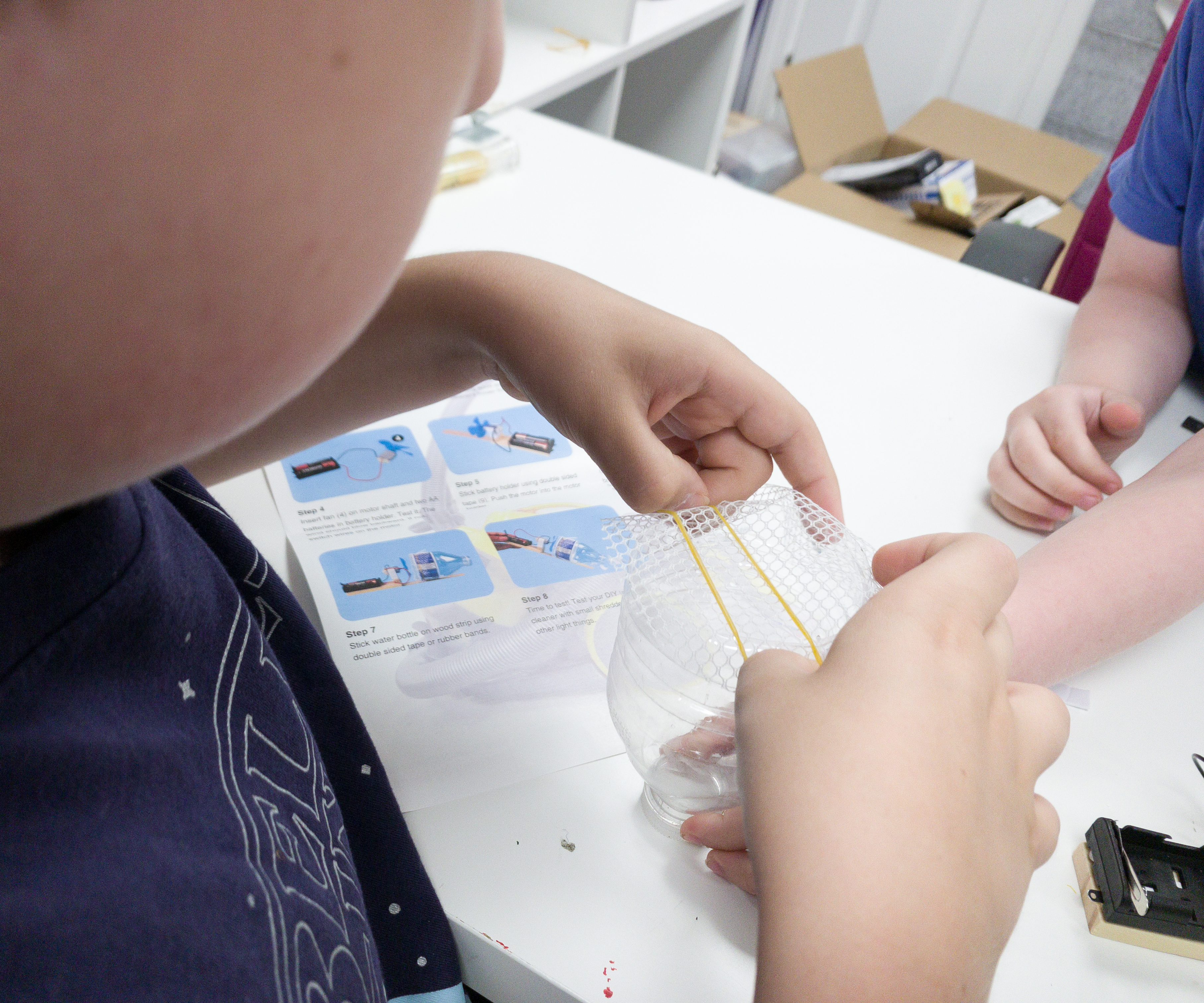
After cutting the top 1/3 part of a water bottle, they tied a filter net on the wider end using a rubber band.
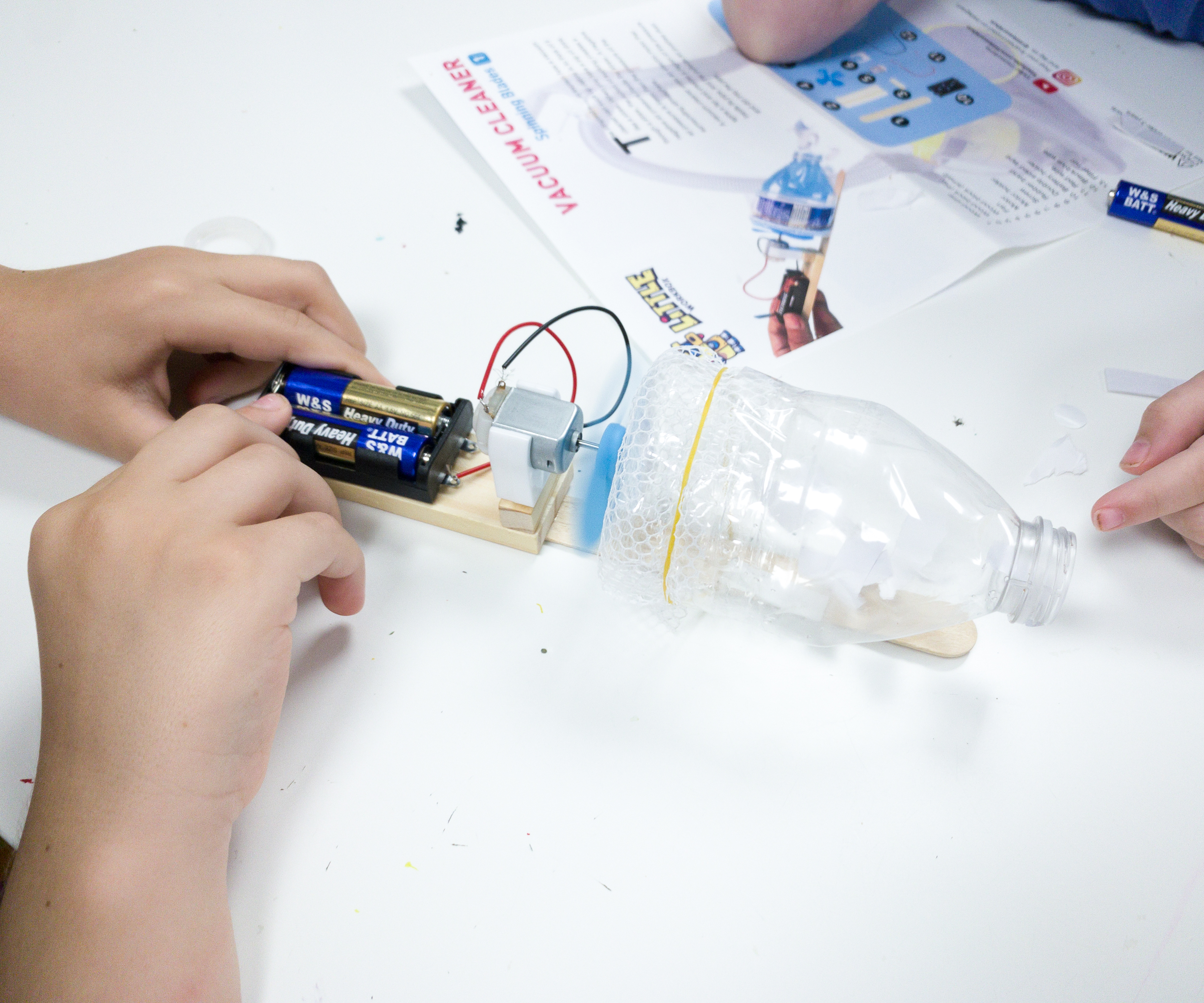
They also stuck the water bottle to the wood strip using double-sided tape.
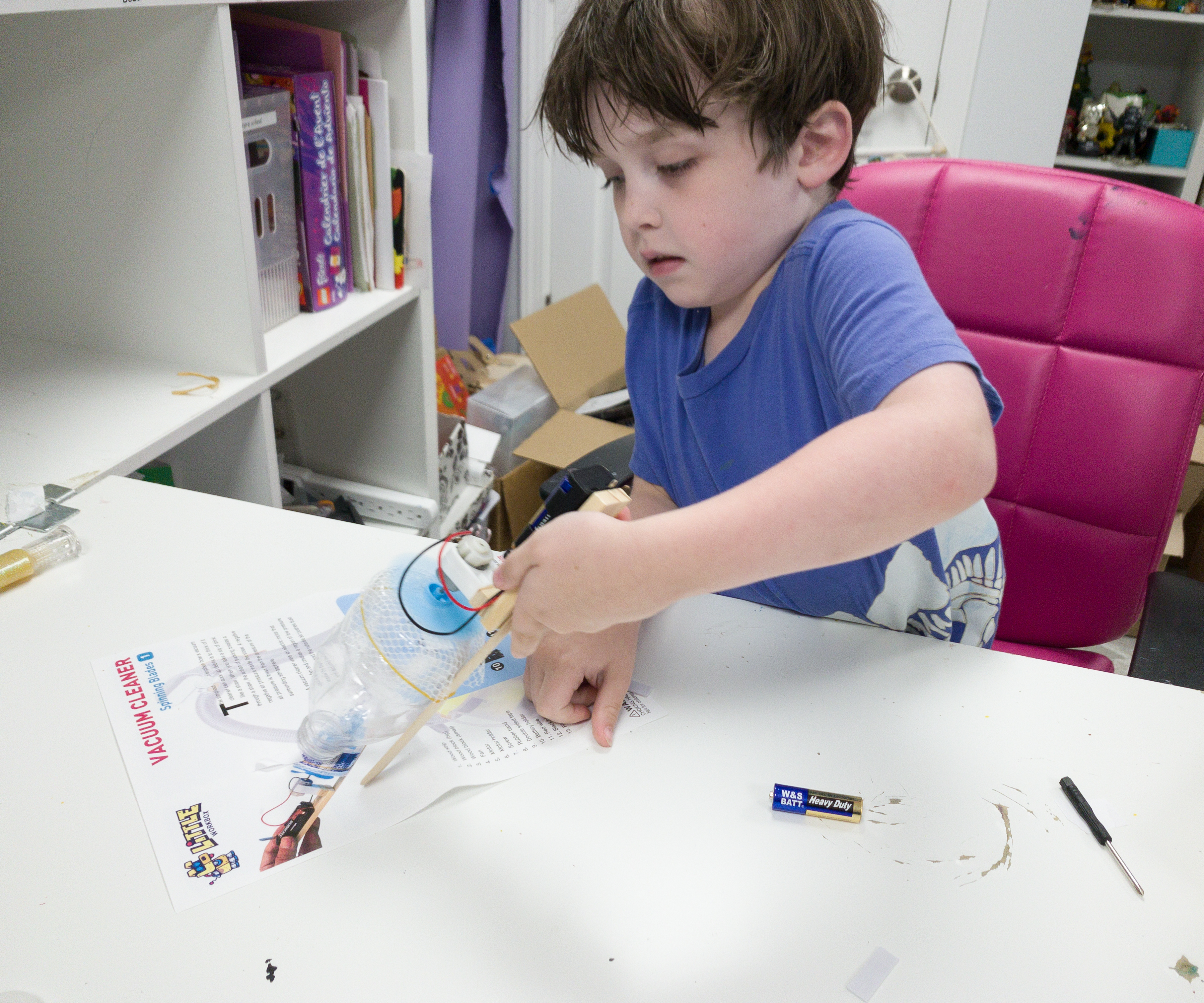
It’s time to try the vacuum cleaner!
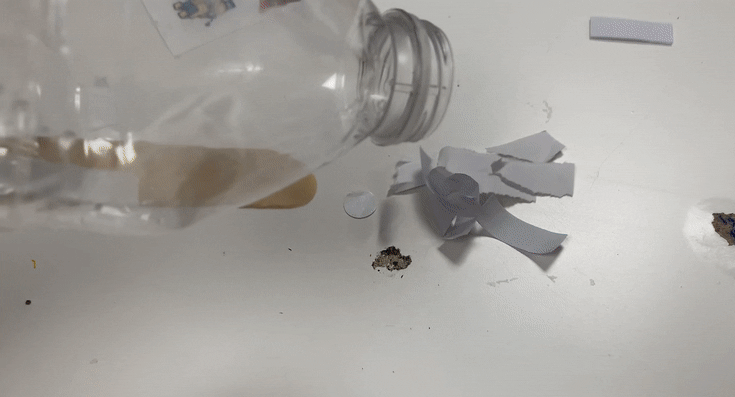
They used small pieces of paper to test the DIY vacuum cleaner!
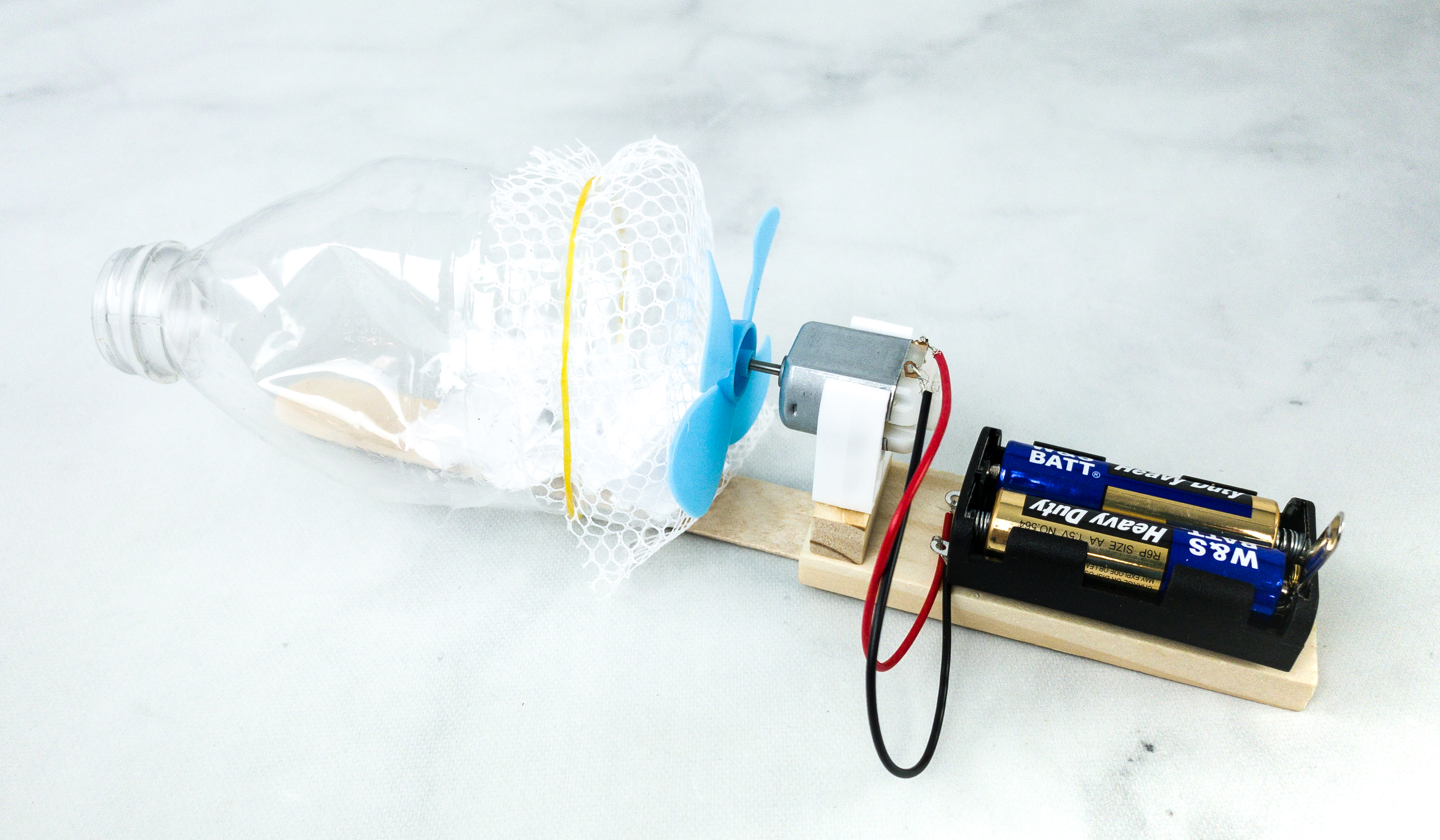
Here’s the completed DIY vacuum cleaner!
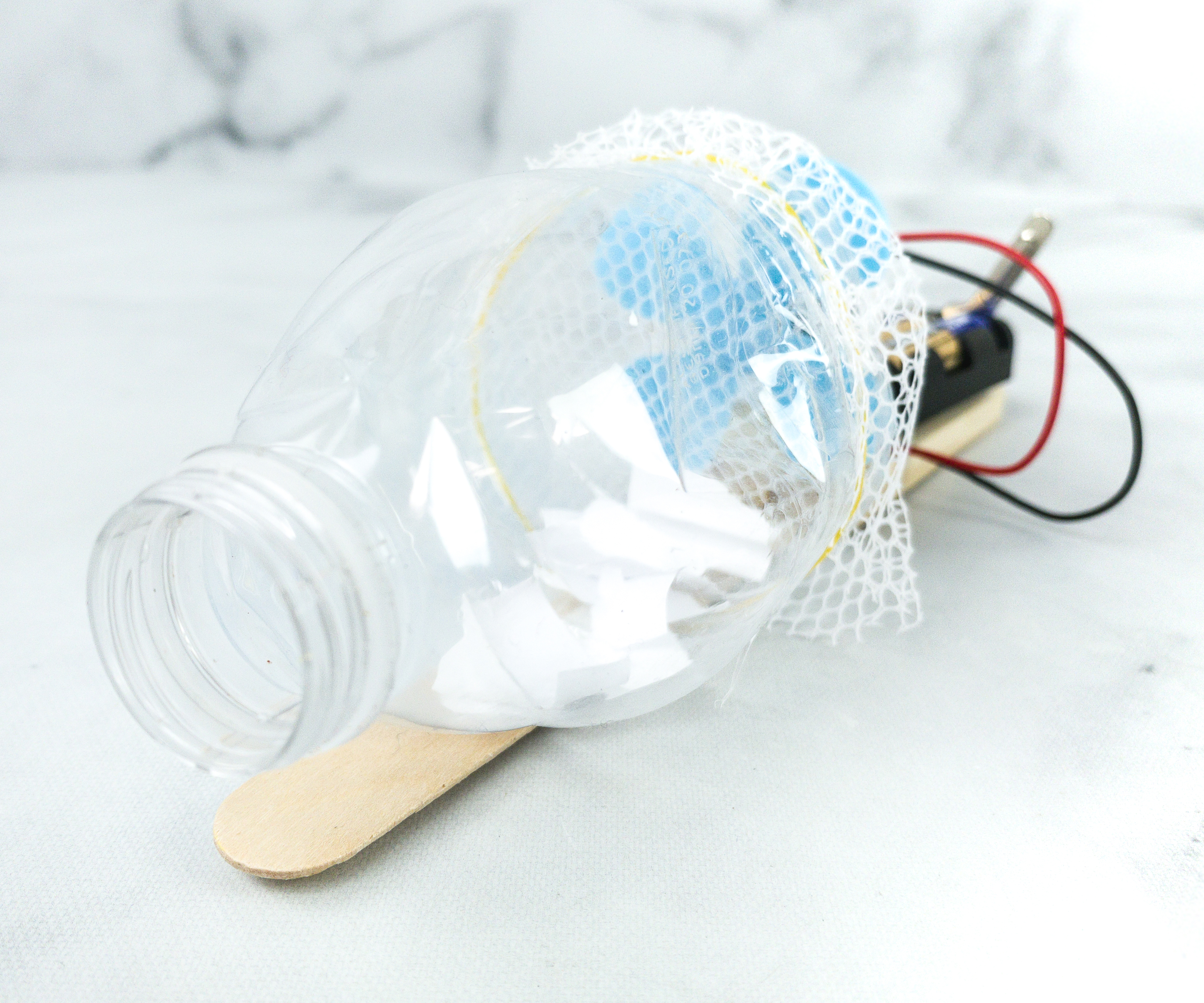
The cleaner successfully sucked in the small pieces of paper!
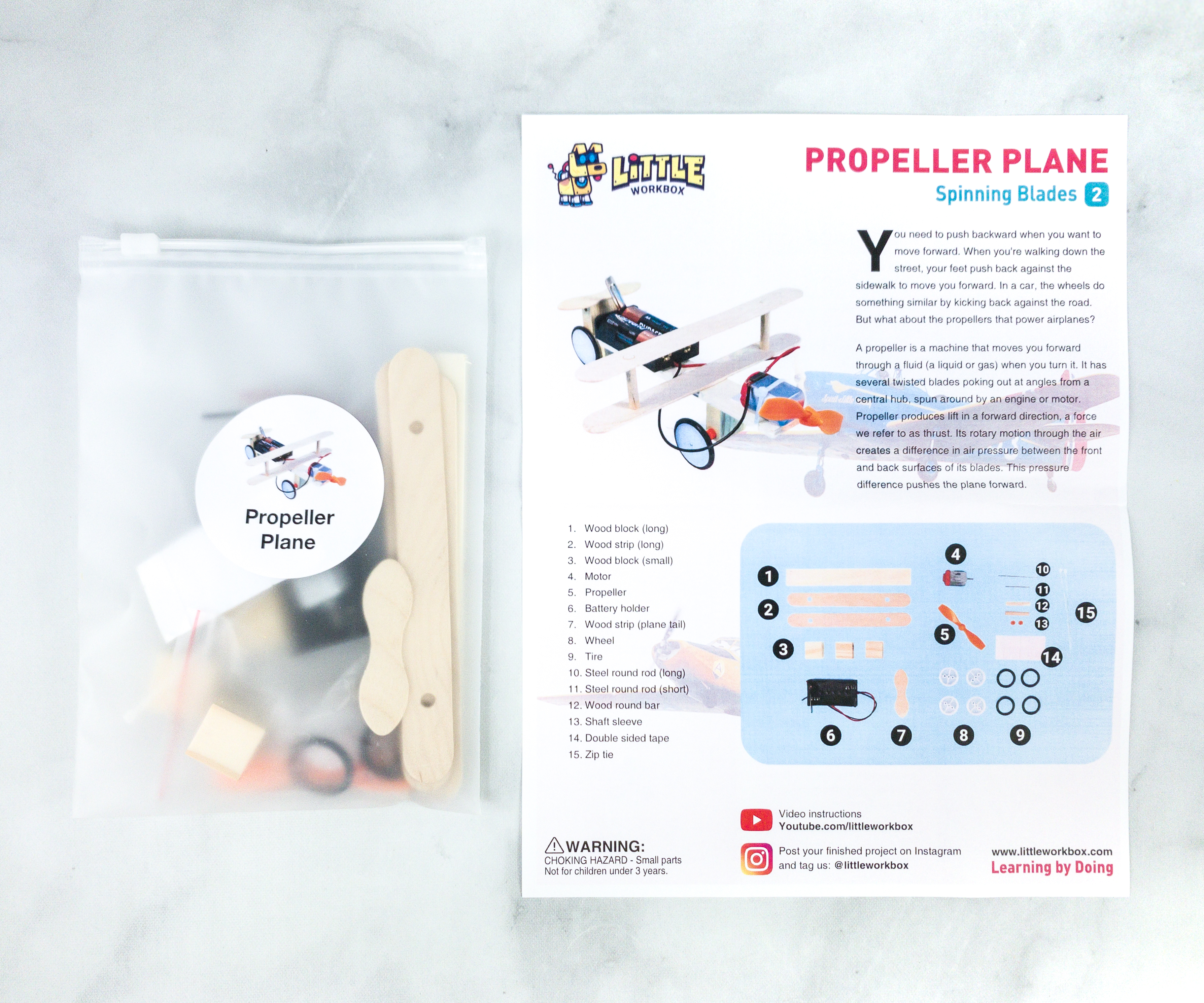
Spinning Blades 2: Propeller Plane.
Propeller produces lift in a forward direction, a force we refer to as thrust. Its rotary motion through the air creates a difference in air pressure between the front and back surfaces of its blades. This pressure difference pushes the plane forward.

The second pack contains the following materials: wood block, wood strip (long), wood block (small), motor, propeller, battery holder, wood strip (plane tail), wheel, tire, steel round rod (long), steel round od (short), wood round bar, shaft sleeve, double-sided tape, and zip tie.
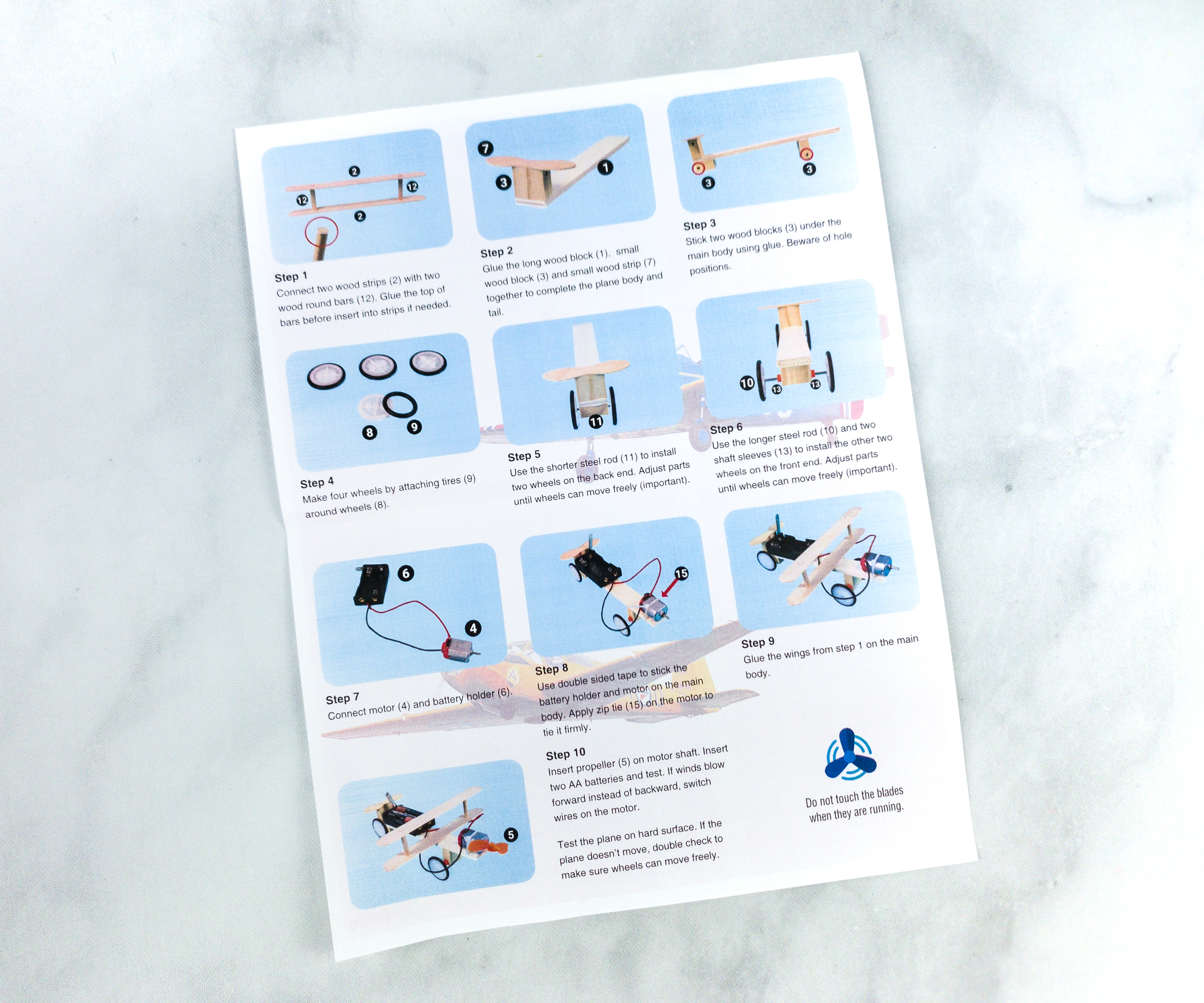
The complete assembly instructions are located at the back of the information sheet.
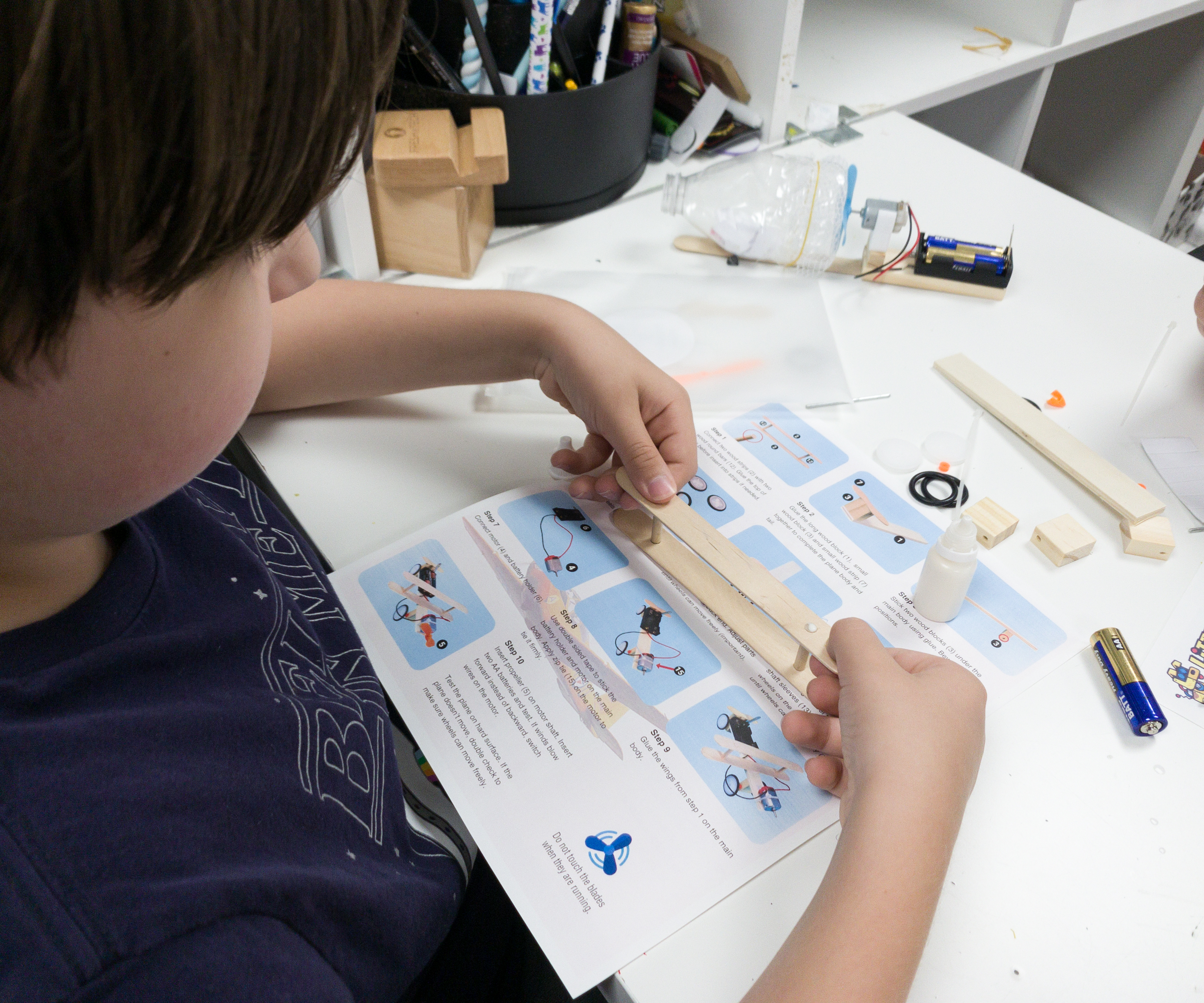
My son started by connecting the 2 wood strips with the wood round bars.

He assembled the plane’s body and tail afterward.
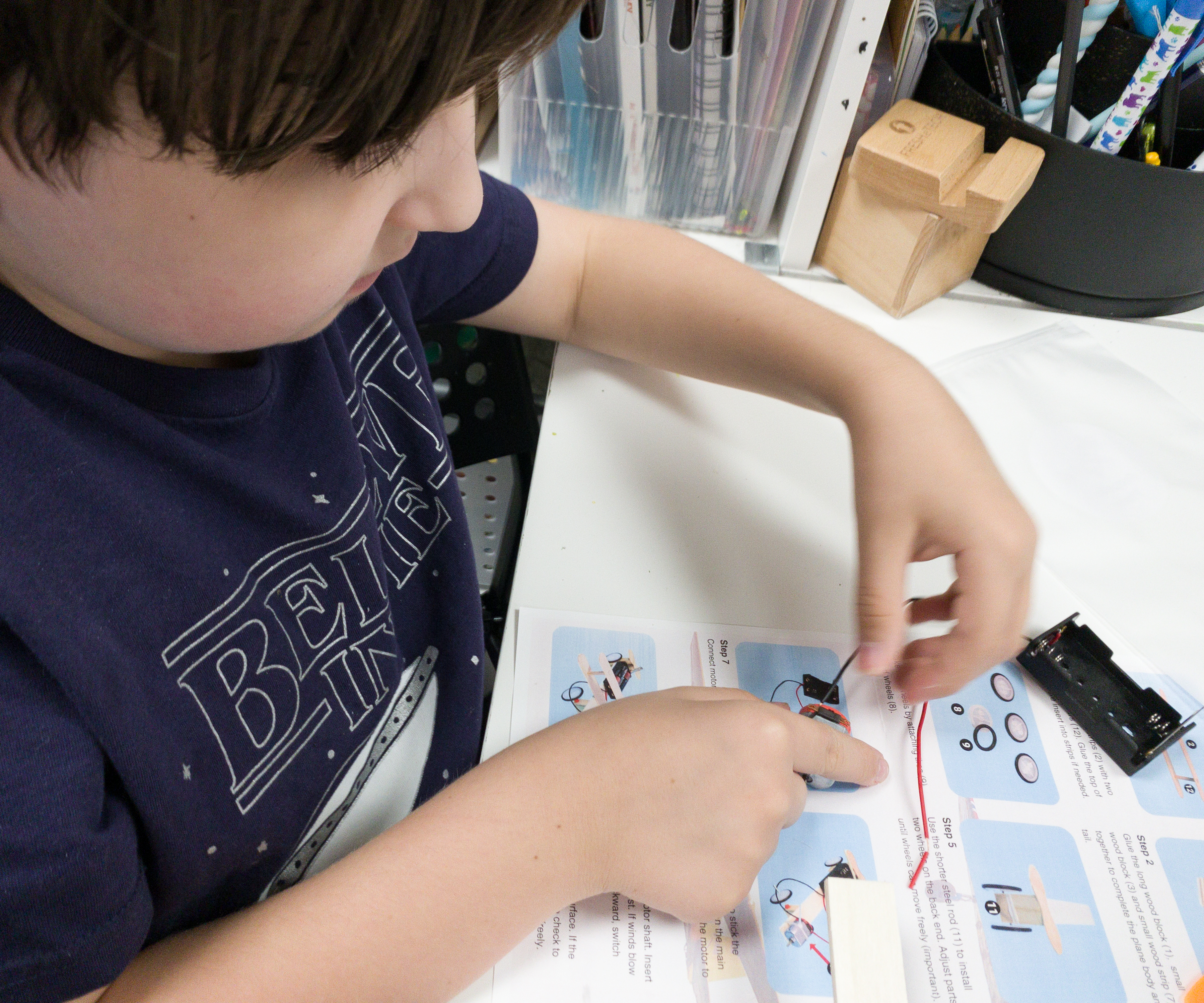
He proceeded to work on the wiring and the battery pack.

He also attached the battery holder and the motor to the plane’s body.
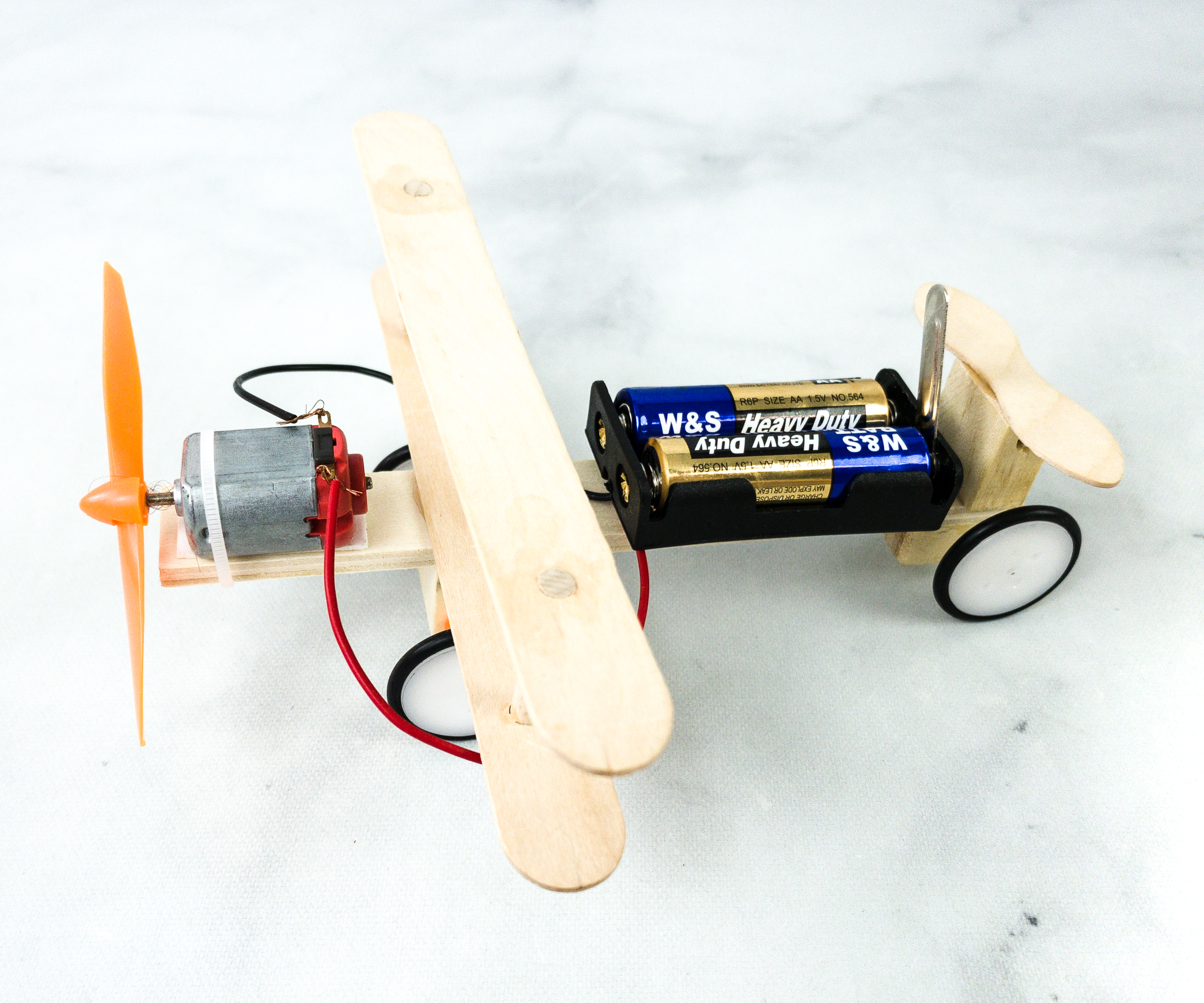
All that’s left to do is to attach the rest of the plane’s parts like the tire, wheels, and the propeller. Then, we also inserted the batteries on the holder and tested it!
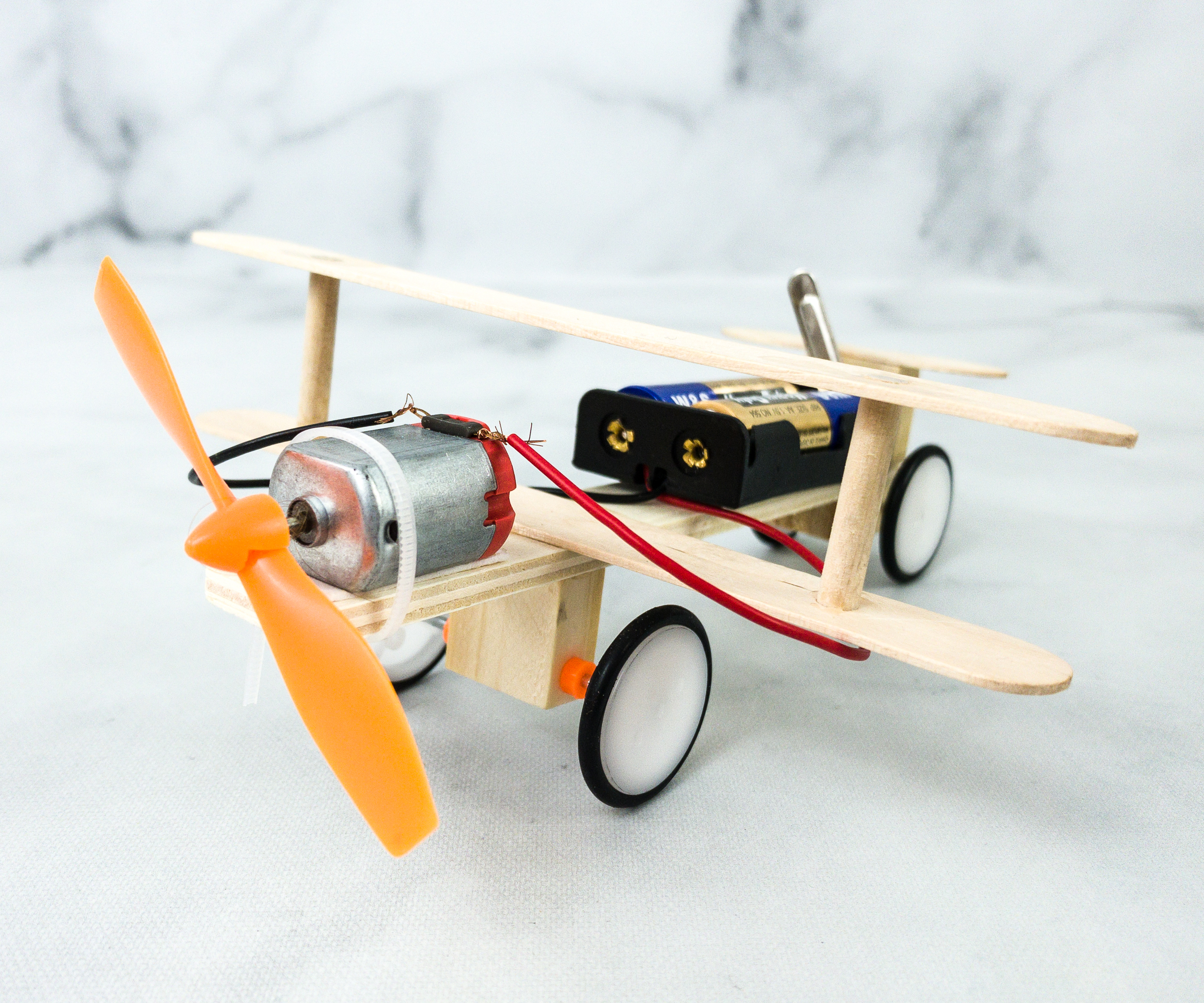
The propeller plane looks amazing and works as expected!
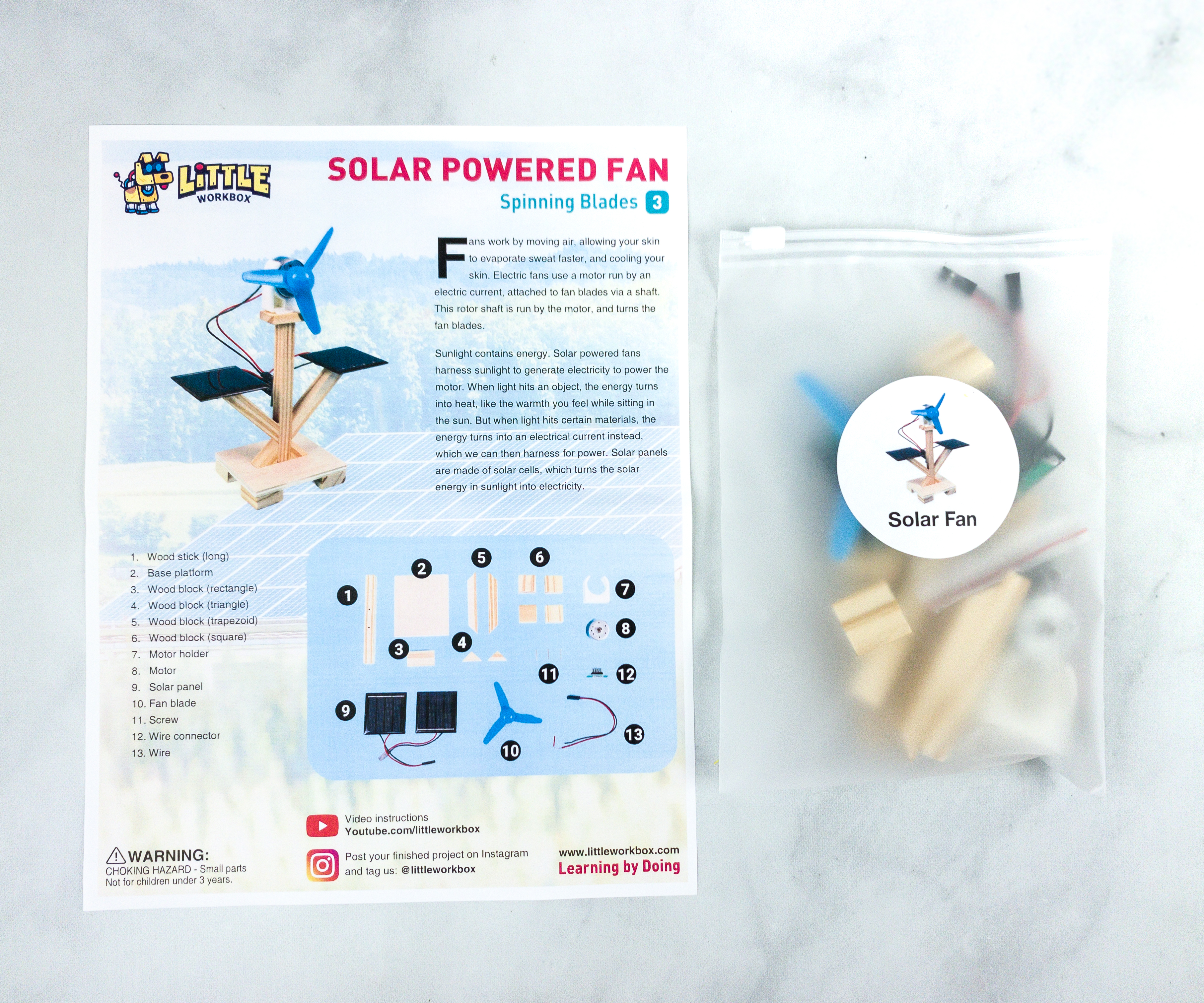
Spinning Blades 3: Solar Powered Fan.
Fans work by moving air, allowing your skin to evaporate sweat faster, and cooling your skin. Solar powered fans harness sunlight to generate electricity to power the motor.
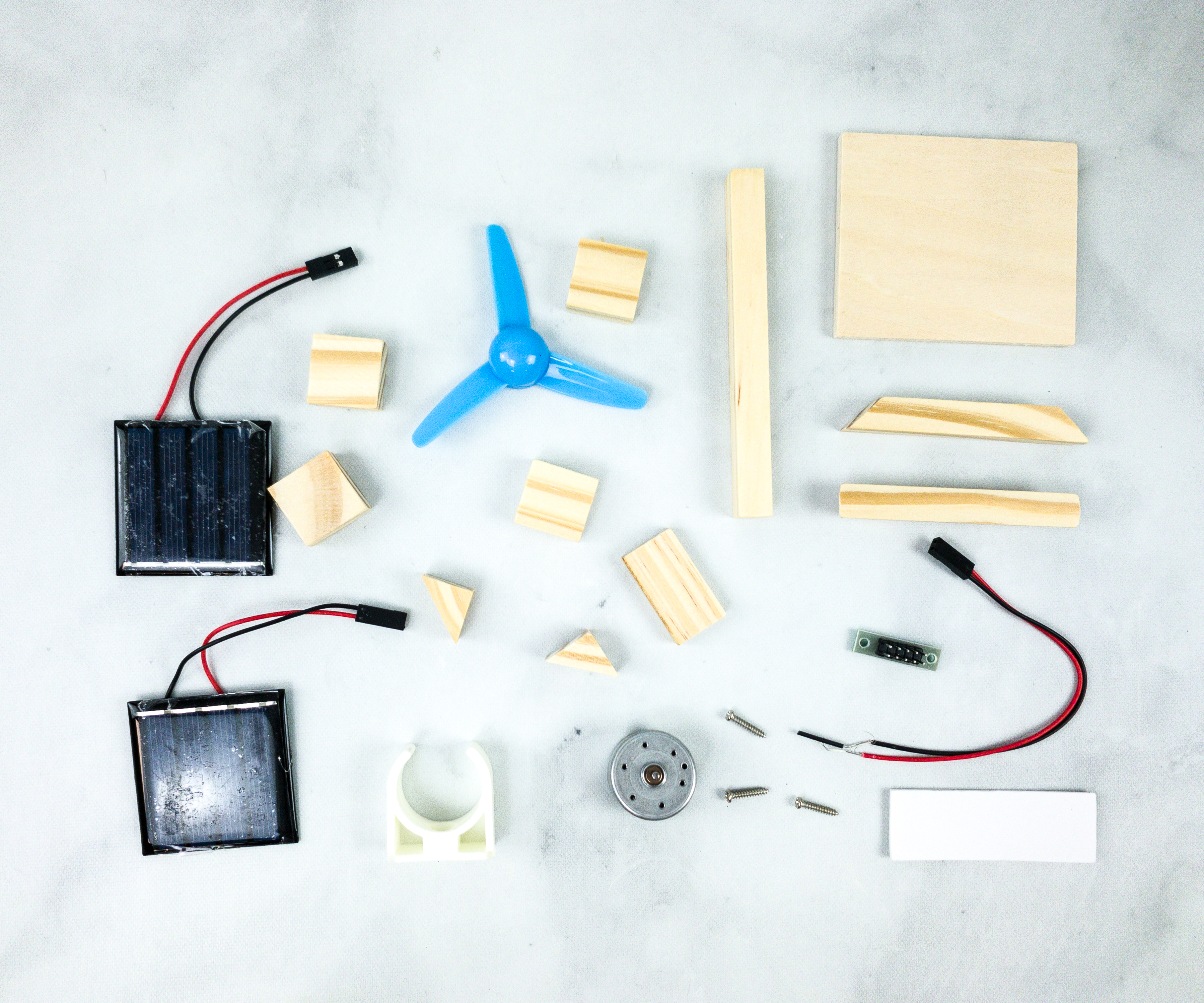
For the third project, we used the following materials: wood stick (long), base platform, wood block (rectangle), wood block (triangle), wood block (trapezoid), wood block (square), motor holder, motor, solar panel, fan blade, screw, wire connector, and wires.
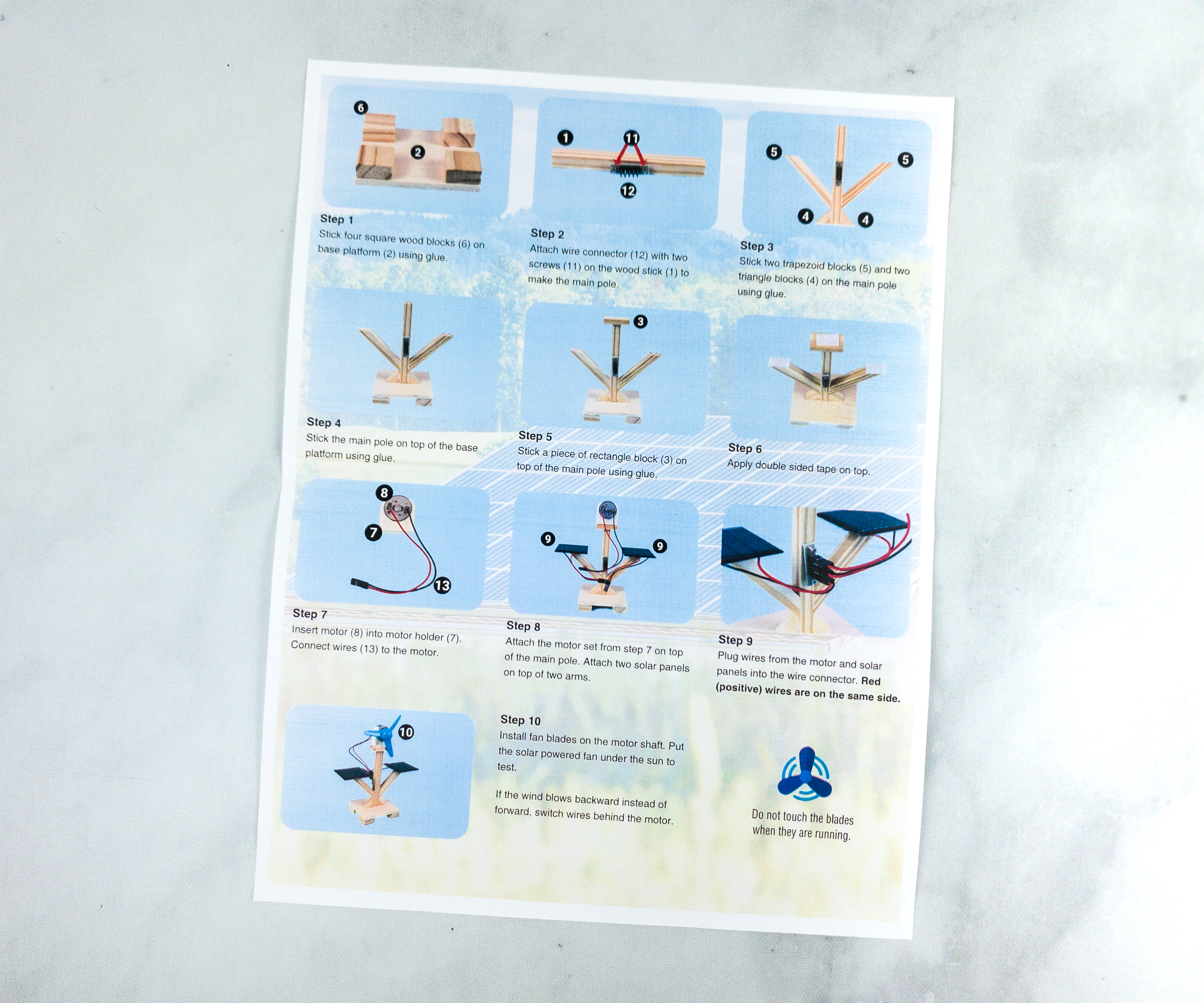
The photo references on the instruction sheet make it easy for my kids to make sure that they’re on the right track.
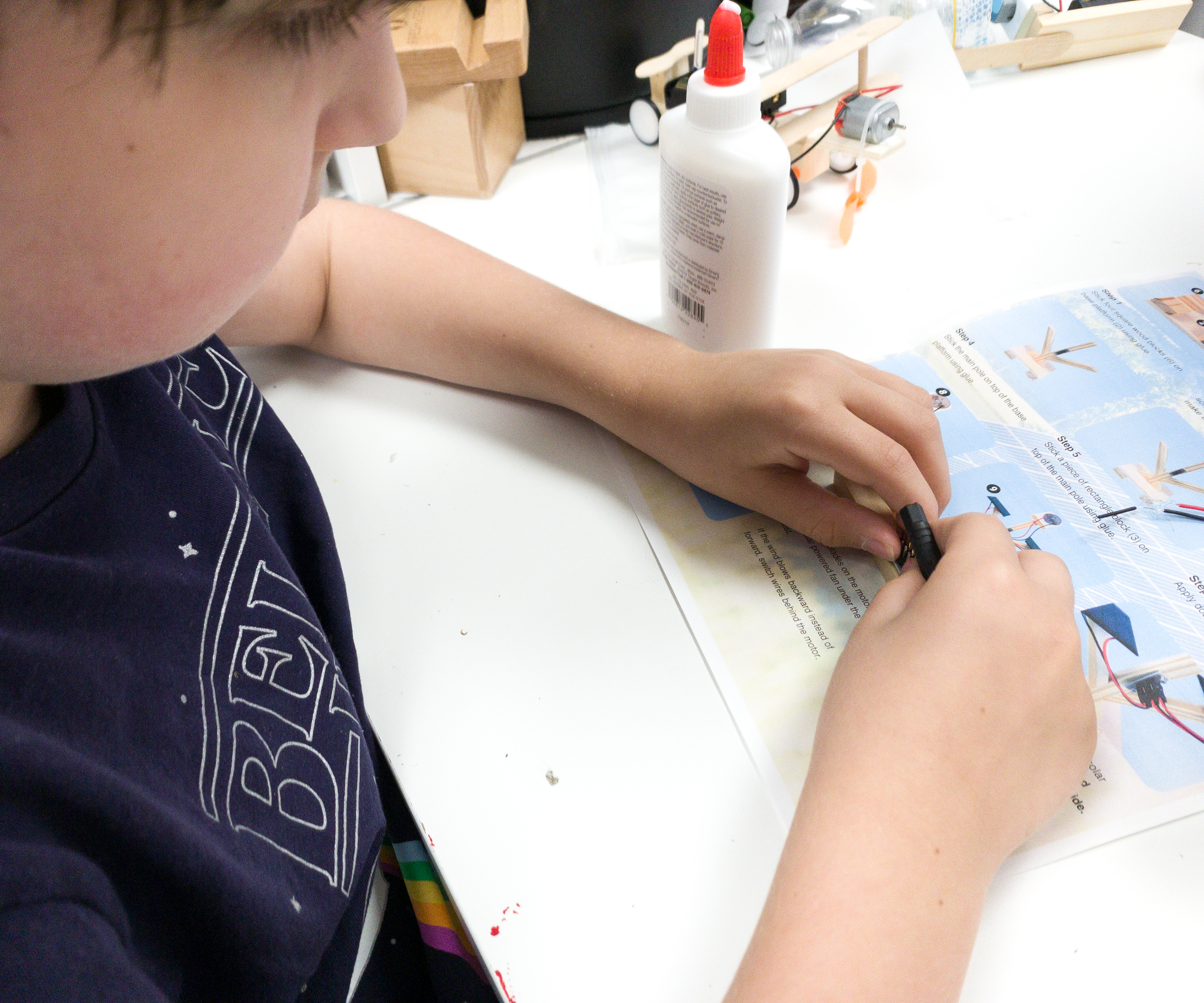
My son assembled the wood parts using a strong glue.

He screwed the wire connector to the wood stick to make the main pole.
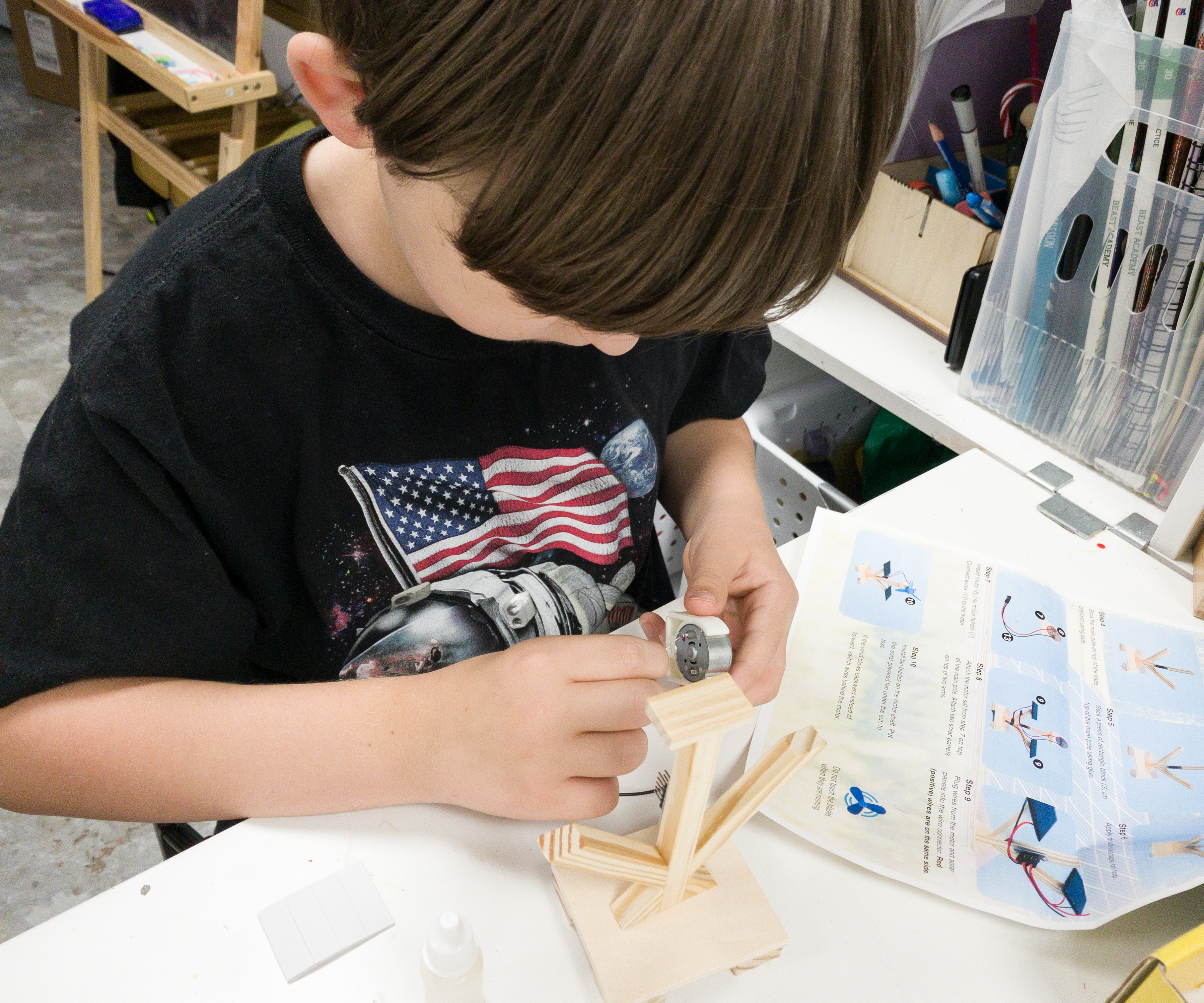
Then, he attached the motor set on the top of the main pole.
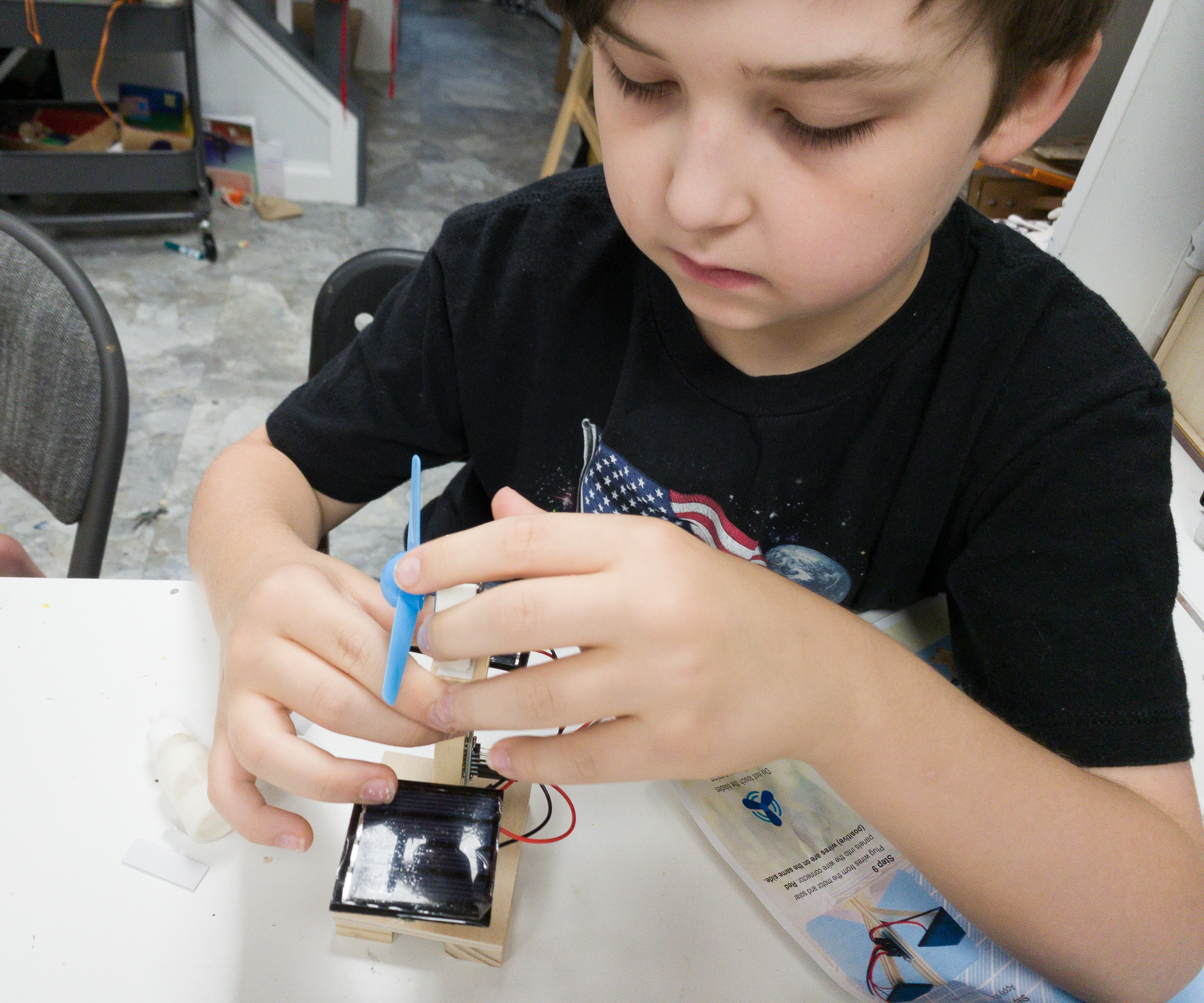
Now, it’s time to add the fan blade on the motor set on the main pole and the solar panels on the two arms.
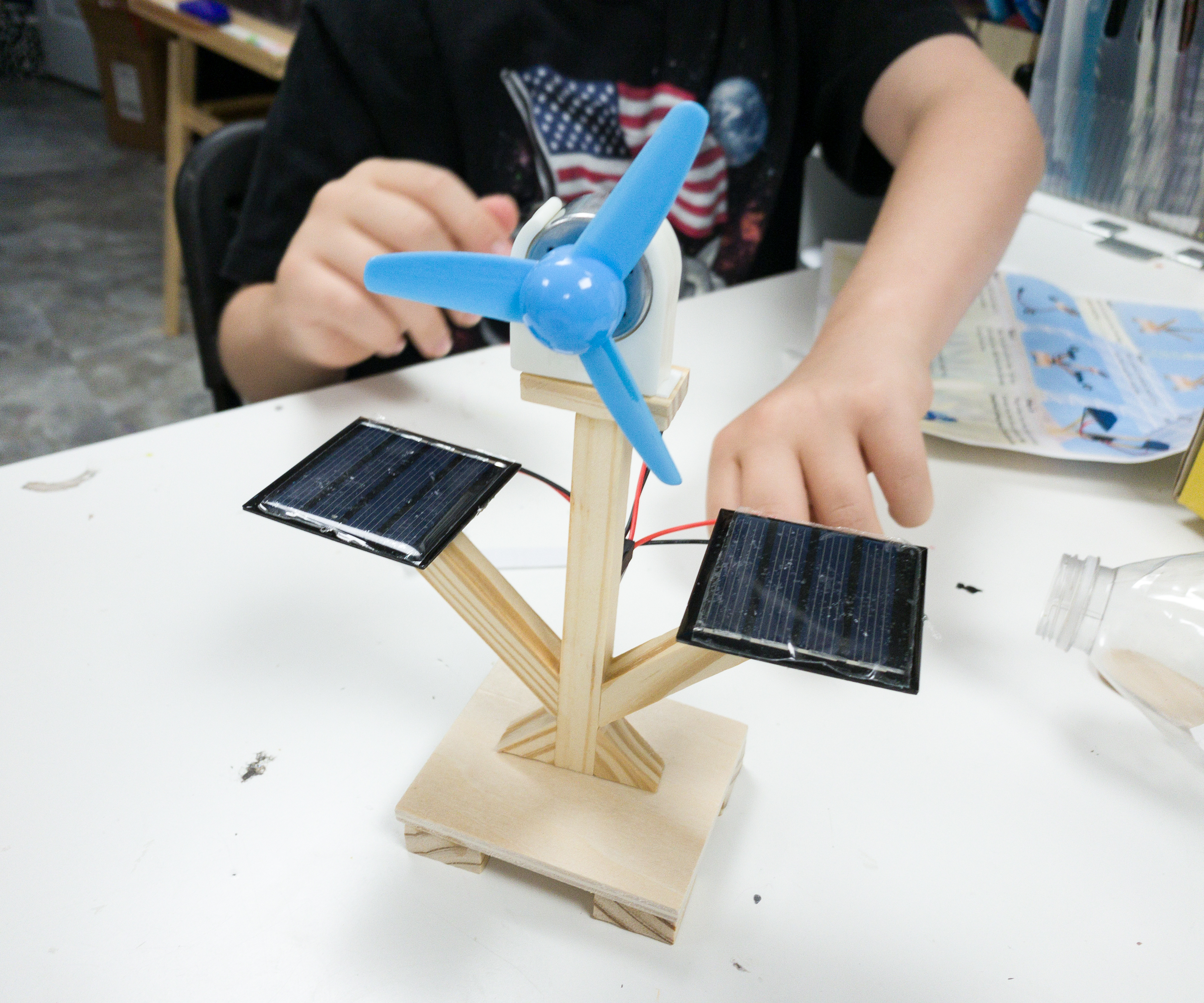
He completed the fan easily. All that’s left to do is to bring the finished project outside!

We put the solar-powered fan on a place where there’s enough sunlight to charge and give it the power to work!
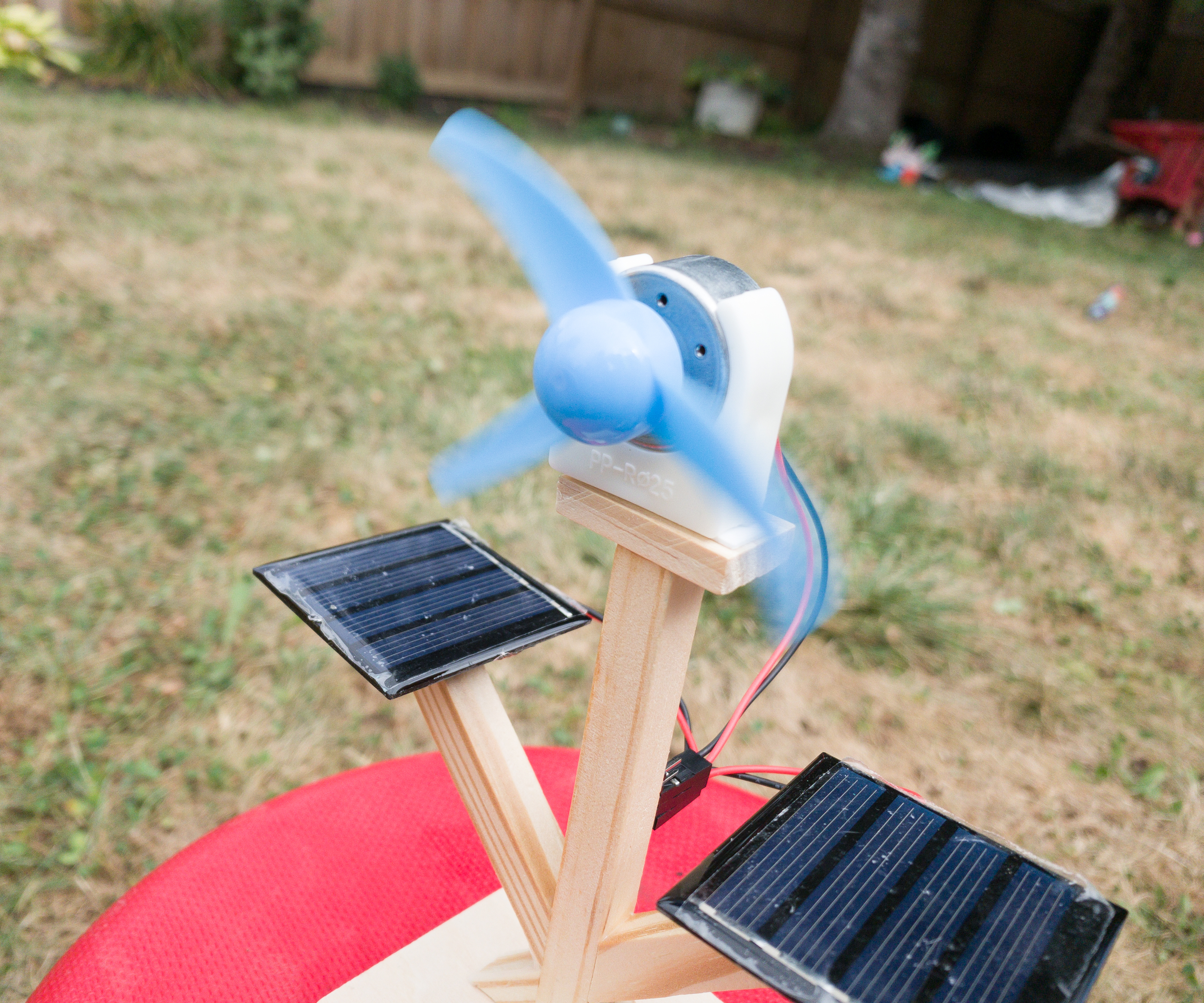
It did work wonderfully! Now we have a fan that doesn’t need batteries or to be plugged to an outlet to work!
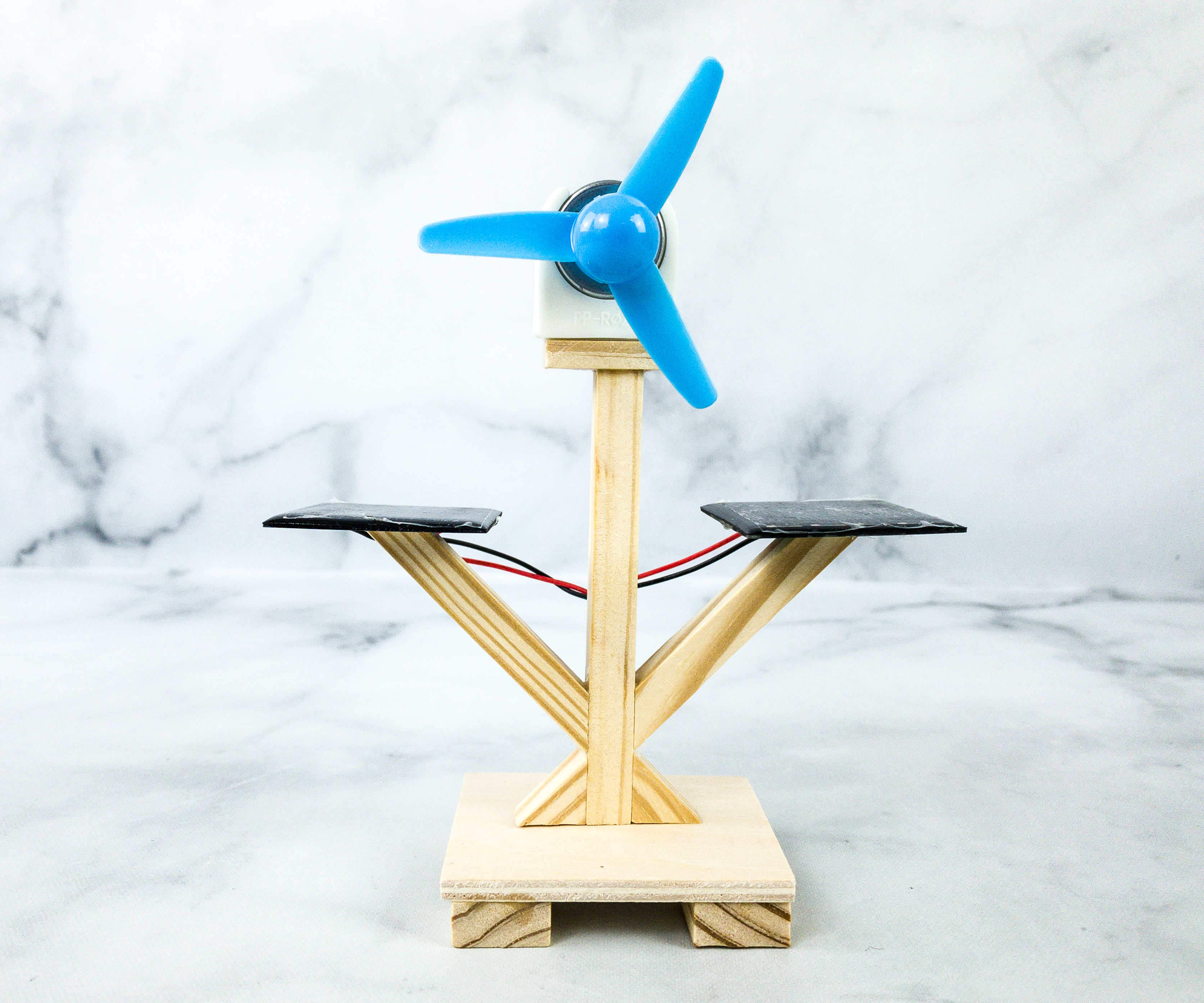
The fan looks awesome as well!

Here’s a look at the back of the solar-powered fan. All the projects this month has the blades exposed, so we had to be extra careful.
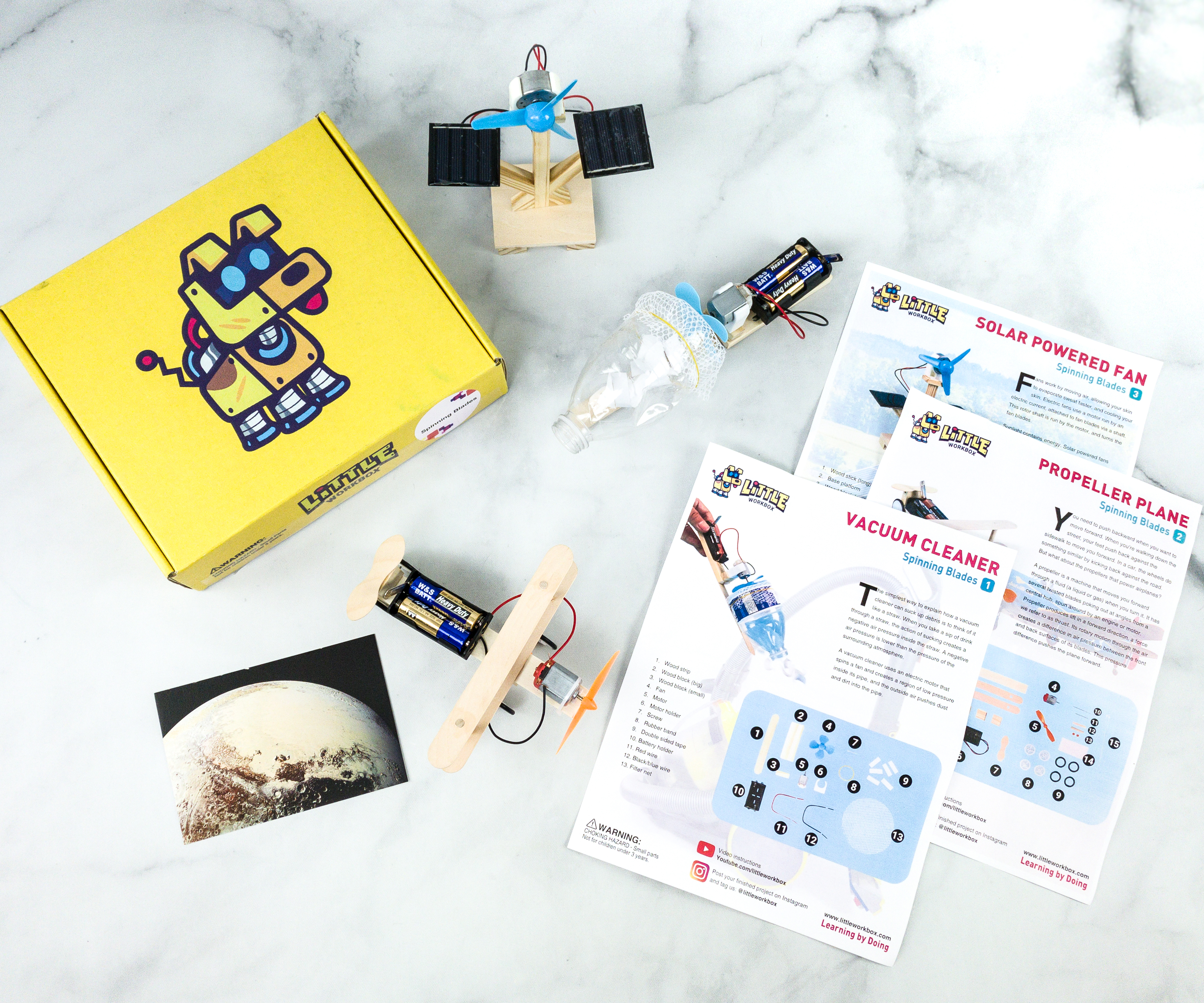
This month’s STEM projects from Little Workbox focused on the uses of spinning blades, from making a vacuum cleaner work, to flying things, and even keeping the surroundings cool! We’re happy that they included all the materials needed in making the projects, and that the instructions really easy to follow. This month’s projects require adult supervision because the kids are working with exposed propellers, but overall, everything is easy enough for kids to understand. This is a fun, hands-on way of learning STEM concepts and we’re happy with this new box overall!
What do you think about the Little Workbox review?
Visit X Workbox STEM Box for Kids to subscribe or find out more!




Comments